- AROUND THE SAILING WORLD
- BOAT OF THE YEAR
- Email Newsletters
- Best Marine Electronics & Technology
- America’s Cup
- St. Petersburg
- Caribbean Championship
- Boating Safety


World’s Fastest Sailboat: Quantum Leap
- By James Boyd
- Updated: June 18, 2013
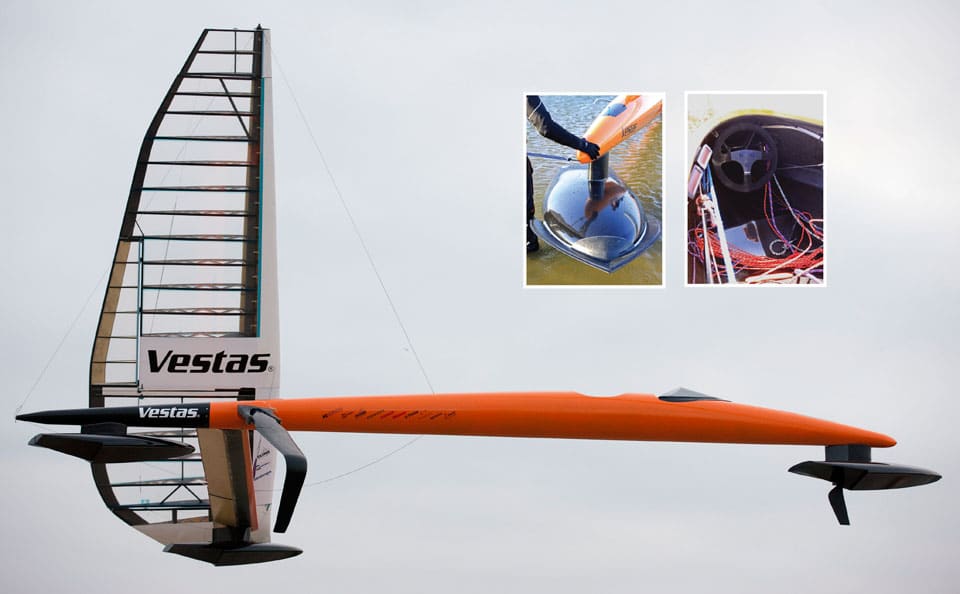
Vestas SailRocket 2
Last November, in southwest Africa, a landmark moment occurred in the history of sailing when Paul Larsen pegged the outright world sailing speed record. In recent years the record was eclipsed in small increments, usually a fraction of a knot, but the Australian’s innovative Vestas SailRocket 2 flew down the 500-meter course at an average speed just over 75 mph, almost 10 knots faster than the previous record held by American kiteboarder Rob Douglas.
Tim Colman’s asymmetric Crossbow established the first 500-meter record in 1972 with a heady 26.3 knots. Windsurfers took hold of the record in 1986 and held it until 1993 when Simon McKeon’s asymmetric yacht Yellow Pages took it and held it until 2004. Windsurfers reigned again for a few years, but it was the kiteboarders who shattered the mythical 50-knot barrier in 2008. In 2009 Alain Thebault’s foiler L’Hydroptère managed 51.36 knots. But the kiteboarders quickly won it back when Douglas pushed the record to 55.65 knots.
With the latest record Larsen not only reclaimed it on behalf of “the boats,” but set a benchmark—65.45 knots to be precise—that will be hard to surpass.
Despite the stunning margin of increase, the record did not come easily. The feat was the culmination of 10 years of hard graft, fiscal uncertainty, and severe setbacks.
The Australian-born Larsen had been best known in the sailing world for his offshore adventures. He crewed on Pete Goss’s ill-fated Team Philips , then ended up sailing around the world in The Race with Tony Bullimore. He completed another lap aboard Doha 2006 , winner of the Oryx Quest.
In 2002, he and his Swedish girlfriend, Helena Darvelid, herself an accomplished offshore sailor, teamed up with English naval architect and speed sailing junkie Malcolm Barnsley.
The catalyst for the SailRocket project was the book The 40-knot Sailboat written in 1963 by American rocket scientist and yacht design visionary Bernard Smith. At a time when yachts still had long keels, Smith described the idea of a sailing vessel dubbed the “aero-hydrofoil” with neutral stability: where the heeling moment from the rig is completely offset by a foil located to windward. Smith built models to prove his concept, but it was only when the first Vestas SailRocket was launched in the spring of 2004 that his concept was proven at full scale.
Initial progress was slow. In 2005, after two seasons getting to know the platform, they replaced its softsail rig with a wing. The first trials with the boat were on Portland Harbour, close to Larsen and Darvelid’s home in Weymouth, Great Britain. In 2007, the duo decamped to Walvis Bay, Namibia, a venue with perfect characteristics that offered more opportunity to carry out runs: a gently sloping beach, regular winds, and a 1,000-meter stretch of obstruction-free water. In recent years, Namibia has taken over from The French Trench in Saintes Maries de la Mer, France, as the preferred location for breaking sailing speed records. All the speed records set by kiteboarders were done in Luderitz, Namibia, some 250 miles south of Walvis Bay.
The first big speeds came in 2007, with SailRocket hitting an instantaneous speed of 42.4 knots during one run. It was well short of the record at the time, but fast enough to prove Smith’s concept. That number also enabled Larsen and Darvelid to gain vital sponsorship from wind turbine manufacturer Vestas.
With such a groundbreaking boat, teething problems were inevitable. They were getting faster, but the boat, rather than the pilot, was still mostly in control. A significant issue was the steering. “The back of the boat looked like Edward Scissorhands,” says Larsen. “We had three rudders hanging off the back; one system was confusing the other. It was a mess.”
After nearly destroying the boat in a crash, Larsen and Darvelid, along with Barnsley and engineer George Dadd, set out to create a better steering system. With this fitted, and_ Vestas SailRocket_ rebuilt, they set off again, as Larsen says “on one of the wildest runs I’ve ever had in that boat.” The steering was better—the boat would bear away to some degree—but far from perfect. On one run, Vestas SailRocket ran onto the beach at 35 knots.
But despite the troubles controlling the boat, Larsen knew they were on the right track. After tweaking the rudder over the next few days, they did one run, in big winds and relatively rough conditions, where Larsen felt for the first time that he was in control of the beast. It was a landmark moment.
“After that run, we booked the WSSRC for the first time,” he says, referring to the World Speed Sailing Record Council, which administers and validates all sailing speed records.
While the boat continued to get faster, a more fundamental design issue became apparent. With the pilot’s seat in the rear of the main hull, trying to keep the boat pointed in the right direction was a challenge. It was, Larsen describes, “like trying to fly an arrow backwards. It would try to turn around and fly the proper way with the weight at the front and the feathers at the back, by turning laterally into the wind, or vertically if it had to.”
On one memorable occasion, Vestas SailRocket took off and performed a complete backflip, leaving Larsen upside down in the water and the boat once again in pieces. The video of this crash went viral on YouTube and has been played more than 400,000 times. But this was one of many incidents: “We had rounded up into the wind, smashed the wing, and folded up the beam at least four times before we even got to the flip,” he recalls. “Each one of those was a big crash, big repair, damaged wing, broken struts; once we got the boat going really quick, then she started to somersault.”
Amid all of this, the world record was being pushed further down the track by the kiteboarders with Douglas stealing it from the windsurfers and then Frenchman Sebastien Cattelan being the first sailor to break the 50-knot barrier. But Vestas SailRocket also made its mark. The same day as the backflip, SailRocket became the world’s fastest boat, as opposed to board, at a speed of 47.3 knots.
The following season Larsen and company realized time was running out for Vestas SailRocket . They had an unofficial run of 49.38 knots and a peak speed of 52.78 knots, but the runs were still very much do or die. Larsen endured another full backflip and a separate catastrophe when the forward beamstay broke, causing the beam to fly back into the main hull and the boat to fold up, putting the pilot in the hospital. “It went from over 47 knots to a standstill, and the beam came back at me like a cricket bat,” says Larsen. “I still rate that as the most violent crash in yachting yet.”
With Vestas SailRocket reaching the limit of its potential, the team was already deep into the design of Vestas SailRocket 2 , harnessing all the knowledge they’d learned from the first boat.
While Barnsley spearheaded the design of the first boat, the principle designer of the second was Chris Hornzee-Jones, a structural engineer and aerodynamicist, who heads the company AeroTrope and designed the wingsail for the first Vestas SailRocket .
Launched in March 2011, Vestas SailRocket 2 incorporated all the fundamental features of the first boat: a hull to windward incorporating the all-important foil, a single crossbeam, and a wingsail inclined to weather by 30 degrees. In other ways, however, it was a significant step forward. At 40 feet long by 40 feet wide, it was slightly bigger, and the hull was now more like a glider fuselage sitting on two short floats at the bow and stern, with the rudder mounted on the forward one. To leeward the wingmast sat atop a third float.
Most noticeable was that while the floats pointed in its direction of travel, the fuselage was offset to starboard by 20 degrees to point into the direction of the apparent wind in order to minimize drag at high speed. They also “reversed the arrow,” putting the cockpit in the bow of the fuselage. They enlarged the wing from 172 sq. ft. to 193 sq. ft., added a hooked section at the bottom of the wing (giving it a hockey stick profile), which acts as an endplate for the wing and also provides some control over how high the leeward float flys.
In the cockpit, in addition to the steering wheel, the controls Larsen uses during a run are the mainsheet and the control for the flap on the outboard extension of the wing. There are also controls for raising and lowering the main foil and the low-speed skeg, and controlling the wing when stationary.
During the 2011 season, the team made solid progress. Vestas SailRocket 2 proved more controllable and stable than the previous boat, and in two seasons of use it experienced none of the same catastrophes that afflicted the first boat. However, regardless of the wind speed, the new boat couldn’t surpass the low 50-knot range. By this stage, Douglas had pushed the record to 55.65 knots.
The culprit proved to be the foil, mounted on a bracket well aft on the windward side of the fuselage.
In 2011, the team trialed two foils. Both were L-shaped, one a conventional asymmetric teardrop shape—with a similar section to an IMOCA 60/Volvo 70 daggerboard—the other a ventilating foil. With the former both the low- and high-pressure sides of the foil are put to use, but when traveling at speeds approaching 60 knots the foil cavitated. This is a common problem for propellers, caused when pressure on the low-pressure side of the foil becomes so low it causes the water to vaporize, effectively detaching it from the foil. With only one side of the foil working, the performance of the foil drops suddenly, with potentially disastrous effects.
A ventilating foil with more of bullet shape (a sharp leading edge, and a blunt trailing edge) is, in hydrodynamic terms, much less efficient: Its effective working area is much reduced, and it creates more drag. However, this shape theoretically removes the cavitation issue and allows the foil to operate smoothly at speeds well in excess of those where a conventional foil starts to struggle. During the 2011 season Vestas SailRocket was mostly being sailed with this foil, only it failed to ventilate properly. In desperation the team took out the grinder and progressively shortened the foil in 6″ chunks, down from 3’3″ to 1’9″, before returning to base to consider the data.
Back in Great Britain, the team planned to build a new foil, but was unsure what exactly to build. Talking to the experts only caused more confusion. They were advised a ventilating foil shouldn’t be able to get beyond 30 knots, but they had achieved speeds in excess of 50 knots with it. So they reverted to their original concept of a ventilated foil, only a depth of around 2′ submerged and a chord of 10″ at its maximum—about 60 percent of its original area. They also fitted Cosworth data loggers to the foil to establish where cavitation or ventilation was occurring.
The eureka moment came not with the new foil on its own, but when they added a strategically placed fence to prevent ventilation in an area of the foil that shouldn’t have been ventilated. And the rest, as they say, is history. Initially they set a new record of 59.23 knots, and 10 days later Larsen managed 65.45 knots with a peak speed of 67.74 knots.
What’s it like at 60 knots? “It depends on how close I get into the beach,” says Larsen. “If I stay out of the rough stuff, it is a short, sharp, bumpy ride, like on a high speed powerboat. This thing doesn’t knife through the waves, it skips over the top of the small chop. At the back of the boat it is pretty good, just riding on a foil, it is pretty civilized. The visibility is brilliant. I have got no sunglasses or visor on. There is no spray coming into the cockpit, compared to the last boat. I only feel a little bit of spray just when I start up.”
At present there are no plans to progress with Vestas SailRocket . The point has been proven. From the heavens Bernard Smith, who passed away on Feb. 10, 2010, can smile. Larsen is adamant the concept will go faster; in theory there is nothing to stop this genre of boat from hitting 100 knots. But it will require another foil. With his offshore background Larsen is intrigued to see if the neutral stability concept can be developed for more practical applications, but only if it makes boats like the 131-foot Banque Populaire maxi tri [the outright ’round the world record holder at 45 days] look like pedestrian dinosaurs.
- More: Best of 2013 , Boatspeed , Sailboats
- More Sailboats

Nautor Swan Has A New Pocket Rocket

Pogo Launches its Latest Coastal Rocket

A Deeper Dive Into the Storm 18

2024 Boat of the Year Best Recreational Racer: Z24

Brauer Sails into Hearts, Minds and History

Anticipation and Temptation

America’s Offshore Couple

Jobson All-Star Juniors 2024: The Fast Generation

- Digital Edition
- Customer Service
- Privacy Policy
- Cruising World
- Sailing World
- Salt Water Sportsman
- Sport Fishing
- Wakeboarding

The Rocket of Lake Geneva
Kite, not sail, testing on lake geneva.
SP80 team (from left): Xavier Lepercq, Mayeul van den Broek, Benoît Gaudiot
© Guillaume Fischer SP80
WIND POWER FUTURE
Sailor pip hare reflects on the toughest moments that …, get inspired by jimmy spithill's mantra on forging …, alex thomson on what it takes to race in the vendée ….
World’s Fastest Sailboats – The Catamaran, Trimaran, Windsurfer and Kiteboarder
By Danny Cruz
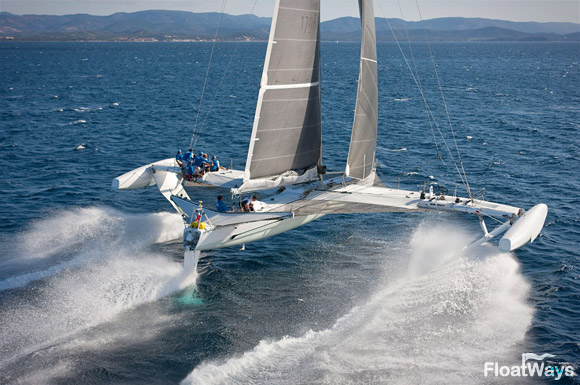
Photo by: CultivArte
Any time someone mentions a sailboat as being fast, the non-sailors cringe at the thought of 12 knots being fast. Can you say 50 knots? Teach them a lesson about fast sailboats…
While 12-15 knots is actually quite fast for a racing sailboat in good windy conditions, high-caliber racing sailboats can do more than 20 knots in high-wind situations. In fact, TransPac TP52 sailboats for example, have been clocked around 30 knots for short burts. That’s nearly 35MPH for easy comparison! And a TP52 is a monohull! Trimaran and catamaran sailboats are typically much faster. On a sailboat, those kinds of speeds feel quite incredibly fast. Doing 20 on a sailboat feels like doing 40 in a powerboat – possibly even more exhilarating than that! Specially given the fact that to go that fast it has to be very windy, which in turns equals choppy seas unless you are in some narrow channel. Consider what it might feel like doing 20 knots in choppy seas where the boat is hammering into wave after wave. You can probably imagine the excitement.
Most of the above comments are based on above average sailboats. Well, to be fair, a TransPac or Santa Cruz 52 is well above average. They are in super boat territory. But, there exists a certain breed of speed sailing boat that is at a whole other level of performance and speed unattainable by standard production boats – Boats that are purposely built for speed as the number one priority. If a TP52 is a super-boat, the way a Ferrari 360 is a super car, the freaks of nature we are talking about would be hyper boats. The same way one would call a Mercedes McLaren 722 a hyper car, boats like the wing-sail AC45 and AC72 developed by the Oracle team for the America’s Cup would be exactly that. These boats which run on a new class in the America’s Cup, are capable of average speeds over 30 knots. Multi-hulls is what the America’s Cup is all about these days, with full teams racing them. Much harder, but much faster and much more exciting for those who love to see fast sailing. In essense, the AC45 is being run during the America’s Cup World Series events in preparation for the America’s Cup in San Francisco in 2013 where the larger AC72 will be raced.
Check out the AC45 and AC72 video below:
Oracle America’s Cup AC45 Photo:
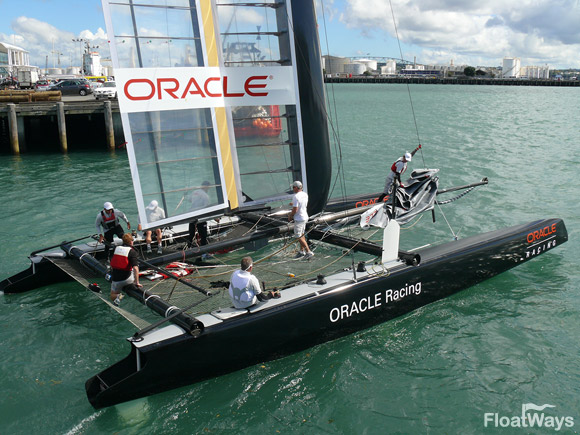
Photo by: chatani If this is not exciting enough yet, check out this high-speed capsize of the Oracle AC45:
These are like sailboats on steroids capable of performance and speed like no other. Most of these hyper-boats are either multi-hull catamarans or trimarans and the random hydrofoil like the l’Hydroptére shown in the photo at the top. But while a multi-hull sailboat is almost always faster than a monohull, you can’t completely write-off a mono. There is a certain breed of monohull sailboat capable of speeds close to 40 knots with sustained distance-averages up in the 20’s. Once such boat is the Mari-Cha IV, a carbon fiber mono-hull that holds the world record for the fastest single-hull sailboat to cross the Atlantic. According to the WSSR and ISAF, the 140-foot monster yacht crossed the Atlantic in 6 days, 17 hours, 52 minutes and 39 seconds at an average speed of 18.05 knots.
There will always be a place for fast single-hull sailboats even if the latest trend is toward multihulls for the sheer speed. Plus, keep in mind that until recently the America’s Cup was done with mostly mono-hulls. There are also plenty of major regatta’s dedicated to monohulls. For the combination of speed and rough-seas ability, fast single-hull sailboats will always have a place.
Video of the record setting l’Hydroptére:
Then there is also the very well known sailing craft, which could also be considered a monohull, called the windsurfer. Yes, we’re talking about the guys on a surfboard with a sail on it! As common as they may seem, they are actually one of the fastest sail-powered crafts on water. And of course, we have to mention the kiteboarders which are actually even faster than the windsurfers if the conditions are right. There’s a lot of debate however as to whether a kiteboarder can be considered a sail-powered craft but we’re simply not going to get too much into the stupid politics related to that.
The big numbers…
Top speeds are usually calculated over short distances such as 500 meters. Most of the fastest sailing vessels can reach high top speeds but because they cannot sustain the speed for long distances, average speeds over long passages seem somewhat low for inexperienced eyes.
Since top speed is the key to a lot of people’s excitement, the numbers for fastest sailing speeds over short distances (500 meters) are also held as world records. Let’s look at some of them:
- l’Hydroptére mentioned above, clocked for over 500 meters: 51.36 knots (59.33 MPH)
- The strange Macquarie Innovation which could be considered a catamaran, but hardly: 50.05 knots (57.62 MPH)
- SailRocket , a wing-sail minimalist boat: 47.36 knots (54.50)
- The Yellow Pages Endeavor , another sailboat made just for speed: 46.52 (53.53 MPH)
- Long Shot , another type of strange trimaran… er… or something 43.55 (50.12 MPH)
However, let’s look at the more common “boats” that are actually FASTER than the strange (and expensive) speed machine sailboats listed above.
- Antoine Albeau holds the speed record on a windsurfer at 49.09 knots (59.49 MPH) – Not quite as fast as some of the mutant sailboats, but still one the fastest sail-powered crafts over water.
- Finally, an American Kiteboarder Rob Douglas did 55.65 knots (64.04 MPH) over the waters of Luderitz, Namibia while kiteboarding, making him the fastest sail-powered vessel in the world!
However, ISAF does not want to acknowledge a kiteboarder as a sail-powered craft claiming that a kite is not a sail. (Even though it’s powered solely by wind). That’s up for debate, and nothing takes away the fact that it’s the fastest wind-powered craft over water.
Of course, these are the current records and someone will soon build something that will break them. But, top records aside, it’s the fact that a sail-powered craft can go THAT fast what really matters. Yes, sailing is exciting. Next time some petrol-head wants to argue about how boring sailing is, show him this article and teach him a thing or two about speed sailing!
About Danny Cruz
Publisher of FloatWays, Danny Cruz is resourceful creative designer, lover of the ocean and all things that float.
What Makes FloatWays Unique For You and Why You Should Stick Around
We love boats! We love everything about boats! FloatWays is dedicated to the art of boating and sailing. Whether it be in the ocean or the lake, we are devoted to the lifestyle and all the joys that come from being on the water. We are people who have practically been raised aboard boats. At the same time, FloatWays believes in being humble, friendly and down to earth (er … More
Sunglasses Guide for Boats
At FloatWays we pay a lot of attention to the visual aspect of the water activities in which we participate. This means we are focused on enjoying our outdoor life by making sure we have the best optical clarity and sun protection we can get. Not only that, but we like to look good while doing it. We've created this sunglasses guide for that very reason. As we look into what the market has to offer for functional and stylish sunglasses and review them on FloatWays, we'll … More
SP80 aims to have the fastest sailboat in the world next year. See photos of the futuristic craft poised to break records.
- Company SP80 is trying to break the world record for the fastest sailboat.
- The fastest sailboat speed is currently 65.45 knots — SP80 is gunning for 80 knots, or 92 mph.
- The SP80 boat was displayed at this year's Monaco Yacht Show.

With its slender frame, white exterior, and extraterrestrial vibe, SP80 is looking to break the record for the world's fastest sailboat.
Although the SP80 boat, displayed "ready-to-sail" for the first time this year's Monaco Yacht Show , looks like it would be powered by rocket fuel, a giant kite pulls the vessel along with the wind, Laura Manon, a spokesperson for SP80, told Insider.
"We talked to hundreds of people over the week, and they were all amazed that it was a sailboat with no engine on board," Manon said of the yacht show.
Manon continued: "People in Monaco said it looked more like a submarine or an airplane, and someone even thought it was a drone!"
The French company, started by pals Mayeul van den Broek, Xavier Lepercq, and Benoit Gaudiot in 2018, hopes to use its analog tech to reach 80 knots, or 92 mph, and shatter the 65.45-knot record held by Paul Larsen and his Vestas Sailrocket 2.
Luxury watchmaker Richard Millie, known for its collaborations with Formula 1 , became SP80's title partner to support the venture.
Related stories
However, despite the team's four-year investment in the project, the boat itself is still in early testing phases. The boat touched water for the first time in early August at Lake Geneva and could withstand being pulled by a speedboat at 30 knots, per a press release on the site — still a far cry from the 80 knots the team is looking to hit.
The SP80 boat is 34 feet long, 25 feet wide, and weighs about 330 pounds, per the company's site . In the front is a cockpit for two: One pilot controls the kite, while the other steers the boat. The carbon fiber build is reinforced with Kevlar for added protection in case of a collision, and pilots are strapped down and given helmets and emergency oxygen masks.
The SP80 appears ready to blast off; however, every detail of the boat is designed to ensure it doesn't actually fly.
"At the very high speeds we are targeting, we don't want to fly but to stay really flat on water, kind of like Formula 1," Manon told Insider.
Underneath the boat is a uniquely slanted hydrofoil , built to keep the vessel in the water as the attached kite pulls it to top speeds.
"The boat has three contact points with the water: the main hull and two side floats. At the rear the power module constantly aligns the kite's ascending force, which pulls the boat up, with the foil force that pulls it down," Mayeul van den Broek, CEO of SP80, explains in the video.
As for what's next for the team, the company says the boat is headed to the south of France for further testing as they race for the world record — which they hope to attempt in 2024.
Manon said the team will attach a smaller kite, allow the pilots to start feeling comfortable with the vessel, and gradually increase the speed using larger kites. The goal, Manon said, is to first break the 65 knot record and "then to continuously accelerate until 80 knots."
Watch: The eFoil surfboard lets you fly above the water
- Main content
- Motorcycles
- Car of the Month
- Destinations
- Men’s Fashion
- Watch Collector
- Art & Collectibles
- Vacation Homes
- Celebrity Homes
- New Construction
- Home Design
- Electronics
- Fine Dining
- Baja Bay Club
- Costa Palmas
- Fairmont Doha
- Four Seasons Private Residences Dominican Republic at Tropicalia
- Reynolds Lake Oconee
- Scott Dunn Travel
- Wilson Audio
- 672 Wine Club
- Sports & Leisure
- Health & Wellness
- Best of the Best
- The Ultimate Gift Guide
Boat of the Week: The World’s Fastest Yacht Can Transform Into a Floating Dance Club at Night
The 85 mph-plus bolide 80 is the world's first hyper muscle yacht. but the futuristic interior is just as outrageous., michael verdon, michael verdon's most recent stories, this new 144-foot superyacht has a glassed-in dining room with ocean views, taking a bow: how yacht makers are rethinking the front end.
- Airliners Are Trying Radical New Wing Designs to Improve Fuel-Efficiency
- Share This Article

Related Stories
- From Vegan Leather to Silence: How Luxury Cars Are Becoming More Eco-Conscious From the Inside Out
- Boeing’s CEO Will Leave the Embattled Aircraft Maker by End of the Year
- Why Bentley Is Remaking One of Its Oldest Models

With the 80, the designer is not exactly throwing sustainability to the winds—but he’s not embracing it, either. Any yacht with 6,000 hp is clearly not eco-friendly. But, counters Acampora, the Bolide (Italian for “fireball”) is more sustainable than traditional motoryachts in its class. The 80 consumes half the fuel at 50 knots that a similar-sized flybridge would use running at 25 knots. “You get from point A to point B in half the time, using half the fuel,” he tells Robb Report during a tour at the Monaco Yacht Show.
Calling the 80 the “culmination” of his career as a designer, Acampora penned hull number one for an experienced client who wanted a new definition of high performance. He got it.

The 80 breathes speed all across its long, slender profile, from the steps in the hull to the air scoops along the side, to the three massive surface-piercing propellers at the stern. The boat is powered by triple 2,000 hp MAN diesels that are staggered to fit in the engine room. But they deliver a ridiculous top end, making it “the fastest yacht in the world,” according to the designer. So much so that it’s the first in what will be an even more ridiculously named category, the Hyper Muscle Yacht, or HMY. Bolide has four other models in design to fill in the gaps.
This Bolide isn’t for everyone—and, in fact, is really for one person—but anyone who stepped on board at Monaco, much less got to do a sea trial, had to admit it was very cool, even if they didn’t like the concept. It stood out among the vanilla superyachts at Monaco.
To gain the low weight but retain the structural integrity needed for churning through the ocean at high speed, the 80 is built of carbon-fiber composites. Across the exterior, Acampora also made good use of the exposed carbon to give it a space-age look. The black-nickel topsides work well with the gray cockpit, which is offset by burnt-sienna upholstery.
The styling, from the three center steps at the stern to a large u-shaped seating area for 12, emphasizes curves and fluidity. The hardtop also undulates with an aerodynamic shape matching the profile.

The helm is also in keeping with the rest of the boat, featuring an Alcantara F-1 steering wheel, a single, 32-inch electronics console panel, and three tall seats so the driver and passengers will feel like they’re cocooned in at those blistering speeds.
But the 80’s real surprise is the interior by Loro Piana, a dark, elegant man cave with leather trim nearly everywhere, interspersed with carbon fiber. It’s no surprise that the two-stateroom layout (it also comes in three cabins) is unusual, customized for the owner.
Acampora refers to it as the owner’s “suite.” It includes a small guest cabin to port, large center salon in the center and main suite up front.

The salon is much larger than expected, with surprising headroom, skylights, and lounges on either side. Leather is everywhere, from the couches to the stylized, pullman-style drawers and cabinets, to the curved ceilings.

Forward is what Acampora calls the “vestibule,” a small corridor with storage that leads to the main suite. This area is much brighter up front, with a monochromatic white bed and walls, offset by a bright, mustard-colored leather dresser.
The ensuite and shower return to the darker theme, with a black marble sink with stylized (black, of course) handles. The black toilet and bidet are, naturally, carbon fiber. Even items like the fire extinguishers are noteworthy since they’re finished in mirror-polished stainless steel, and the leather straps on the dresser drawers replace latches to prevent rattling.

It’d be easy to get lost in the wonderland interior, but the Bolide 80 is still, at heart, a fast yacht. “Too many vessels these days focus on style and aesthetics,” says Acampora. “We’re really focused on performance.”
The Bolide 80 will come in a limited-edition series of 10 customized boats, costing about $10 million.
Click here for more photos of the Bolide 80.

Read More On:
- Bolide Yachts
- motoryachts
More Marine

This New High-Performance Electric RIB Can Hit a Ferocious 50 Knots at Full Tilt

This Insane Submarine Concept Doubles as a 107-Foot Superyacht

Culinary Masters 2024
MAY 17 - 19 Join us for extraordinary meals from the nation’s brightest culinary minds.
Give the Gift of Luxury
Latest Galleries in Marine

The eD 32 c-ultra in Photos

Deep Sea Dreamer in Photos
More from our brands, dickies launching guy mariano skateboarding collection, who is kim mulkey, the lsu coach battling the washington post, ‘the bear’ and ‘beef’ writer alex russell sets directorial debut ‘lurker,’ starring théodore pellerin and archie madekwe (exclusive), former employee sues museum of arts and design, claiming she was fired after complaining about director’s expenses, the best yoga blocks to support any practice, according to instructors.
The Fastest Monohull Sailboat In The World

The fastest monohull sailboat in the world is a needle-nosed ocean racer called V.O.60. It was designed by Bruce Farr, and is capable of 36 knots. That's 41.4 mph. This sleek machine is 64 ft. long, just over 17 ft. wide and weighs 30,000 pounds. The mast soars 85 ft. in the air. The bottom of Farr's speedster has a flat after section like a powerboat--the hull lifts out of the water and planes at anything over 17 knots.
To achieve this record-breaking performance, with handling to match, the weight of all equipment is concentrated in the center of the hull for a low polar moment of inertia. Both the hull and deck are as clean as possible for minimum resistance. The keel is a narrow blade sticking down into the water, with a 12,000-pound lead torpedo at the bottom that's contoured to provide lift. The rudder is T-shaped, with its own lifting foil. To help trim the boat against the tilting force of the sails, 13,000 gal. of water can be pumped into three holding tanks in the hull.
The hull is Kevlar cloth set in resin, and the mast, boom and spinnaker pole are carbon fiber. The sails are a woven composite, vacuum-formed under heat and pressure to hold a preset shape. Everything that's not some form of composite is either aluminum or stainless steel. A Volvo Penta MD2030 Diesel generator provides power for extensive electronics, and a Volvo Penta MD22P provides auxiliary power for docking.
Some 35 of these racing boats have been built, comprising an international 1-design class. The premier V.O.60 event is the around-the-world Volvo Ocean Race held every four years. The latest competition started in Southampton, England, on Sept. 23, 2001, and will end in Kiel, Germany, on Sept. 6, 2002. By that time, the crews will have raced 32,700 nautical miles, with stops in Cape Town, Sydney, Hobart, Auckland, Rio de Janeiro, Miami, Baltimore, La Rochelle and Göteborg.
Expensive Racing--Is There Any Other Kind? Racing around the world is not cheap. The eight participating V.O.60s cost $3 million each and are owned by multinational companies including Australian Rupert Murdoch's News Corp., Swedish lockmaker Assa Abloy and German construction company Illbruck. The companies will have spent an impressive $15 million each by the time their boat reaches the finish line.
Each V.O.60 requires a crew of 12 to race it flat-out, day and night. Nearly all crew members are full-time professional sailors, who can earn up to $1500 per day. Most are in their 20s or 30s and look like bodybuilders. Only the helmsmen and tacticians, whose experience is more valuable than bulging biceps, are apt to be older than 40.
Volvo has its own V.O.60, called Volvo Spirit . PR guy Dan McCue was able to secure berths in Volvo Spirit for six U.S. journalists, including me, on the 922-nautical-mile Miami-to-Baltimore leg of the Volvo Ocean Race. We'd be paired with six professional sailors from Sweden who were none too sure what they'd gotten themselves into.
Before we neophyte ocean racers were allowed out, we had to go through two days of sail training with our new crew mates, plus an all-day course in safety and emergency procedures. We were restricted to one small carry-on bag and told not to expect to bathe, shave or change clothes during the trip.
Above decks, Volvo Spirit looks like an oversize dinghy. There are tandem steering wheels, a dozen winches, two grinders and a convex deck fenced by lifelines. When Volvo Spirit buries her nose in a wave, there's nothing to stop the water from flowing smoothly over the boat, sweeping anything not tied down--including careless sailors--over the cut-down transom.
Down below, Volvo Spirit has all the cheerful ambience of a World War II U-boat. There are a half-dozen pipe berths, a token marine toilet jammed against the mast, and a cubbyhole crammed full of computers where the tactician spends his days and nights. The galley consists of a foot-square sink and a single propane-powered burner. Ocean racers live on tasteless freeze-dried food reconstituted with distilled seawater.
Volvo Spirit 's skipper divided the 12 of us into three watches, 3 hours on and 6 hours off. We lined up next to the eight race boats and left the starting line just north of the entrance to the Port of Miami at 1 pm on Sunday, April 14. Amazingly, six of the professional skippers jumped the start and had to turn around and recross the line. We sailed behind the leaders, and ahead of the miscreants, until the group spread out over miles of ocean.
The sailing was magnificent, hour after hour of running before the wind or on a broad reach, pushed along at 14 knots by 20-knot winds. We made only a handful of sail changes in four days. Twice, I was able to steer for a full 3-hour night watch without touching a line, delicately balancing the main and spinnaker, Polaris ahead and Orion behind, providing my only illumination, and 150 miles from the nearest land. It was sublime.
We reached the finish line in Baltimore at 12:04 pm that Thursday, 10 hours behind the leader, News Corp. We'd covered 922 nautical miles in 95 hours. To our delight, the last three competitors entered the harbor while we, having shaved and showered, were eating lunch on the waterfront. The perfect ending.

.css-cuqpxl:before{padding-right:0.3125rem;content:'//';display:inline;} Outdoors .css-xtujxj:before{padding-left:0.3125rem;content:'//';display:inline;}
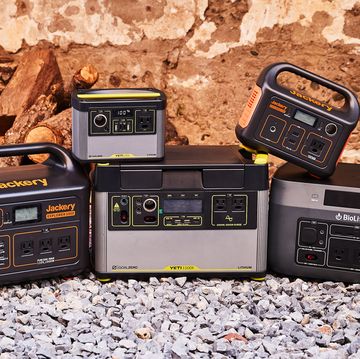
The 7 Best Camping Lanterns to Light Up the Night
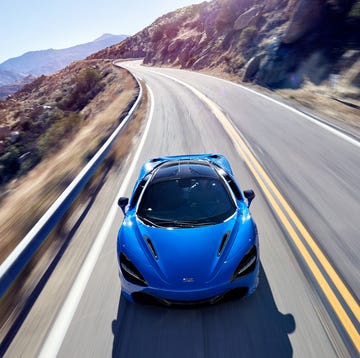
15 Countries Worth Visiting for an Epic Drive

These Insulated Yeti Products are On Sale

The Best Emergency Kits for Help in Any Situation
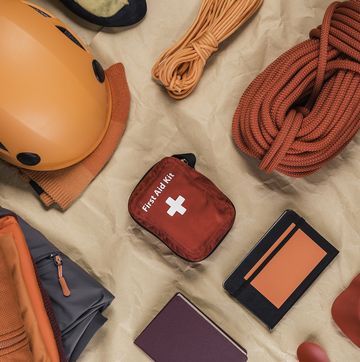
The 8 Best First Aid Kits for Emergencies
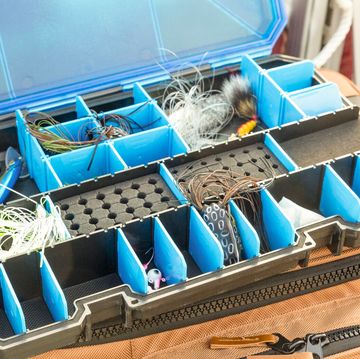
10 Best Tackle Boxes and Bags

Best Motorcycle Camping Gear

The New Jackery Explorer 2000 Plus Is 22% Off
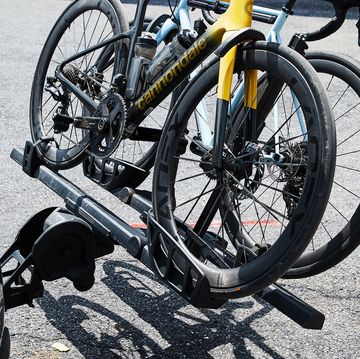
10 Best Bike Racks for Your Car or Truck

Wakesurfing 101: A Beginner’s Guide


- Subscribe Now
- Digital Editions

Fastest boat: The current holder and contenders for the world water-speed record
Attempting the world water-speed record takes years of preparation, massive amounts of horsepower, a huge budget, some astonishing engineering, the aerodynamics of a fighter jet and cojones the size of Milford Haven. Despite all this there are currently four active contenders for the title of the world’s fastest boat...
What is the world’s fastest boat?
The current title of world’s fastest boat belongs to Spirit of Australia , which recorded a two-way average top speed of 317.6mph (551.1 km/h) on Blowering Dam, NSW in 1978.
Piloted by the late great Ken Warby, this homebuilt wooden speed machine was the first boat to break the 300mph and 500km/h barriers.
Warby, who passed away in early 2023, was the first Australian to hold a world speed record and the first person to design, build and pilot a water speed record boat.
Who is trying to break the fastest boat record?
Quicksilver.
Nigel Macknight is both the driving force and the driver of Quicksilver , Britain’s long-standing-challenger for the title of world’s fastest boat.
But despite having worked on the project for the best part of 30 years and surrounding himself with experts from previous land and water-speed record attempts, the team is still some way off staging an attempt on the record itself.
Working with Ken Norris (chief designer of Donald Campbell’s Bluebird K7 , which set the water-speed record in 1964) construction of the craft’s steel spaceframe chassis was completed in 2002 and the team installed and fired up a 25,000hp Rolls-Royce Spey jet engine.
Article continues below…
World’s largest superyacht: Everything you need to know about 183m REV
How donald campbell broke both land and waterspeed records in the same year.
However, neither the bodywork nor the complex control systems were finalised and the first iteration of the design was shelved following wind tunnel testing that suggested major stability issues.
Since then the team has gone through two further designs before landing on the current twin-cockpit version (pictured above). Concept 4, as it is currently known, sees the engine mounted towards the front of the central hull.
The 25,000hp Rolls-Royce Spey jet engine has since been replaced by a 10,000hp Mk 101 version from a Hawker Siddeley Buccaneer bomber.
This will be mounted into an all-new hull that is being built from kevlar and Baltek, a highly-engineered balsawood material produced by 3A Composites SA of Switzerland.
Once complete, this will be coated in a thin layer of fibreglass before being mounted to the pre-existing steel spaceframe.
Ken Norris is no longer chief designer, but his ideas are being taken forward by Ron Ayers, Lorne Campbell, Mike Green and Roland Snell.
The Quicksilver team say that they will reuse almost all of the hardware acquired for previous iterations of the design, thus speeding up the construction process, but no launch date has yet been set.
Find out more on the official Quicksilver water-speed record website .
Spirit of Australia II
Of the four teams currently challenging for the title of world’s fastest boat, team Warby is the only one to have a working boat.
Spirit of Australia II is an updated version of the hydroplane design Ken used to set the original record in 1978, with better aerodynamics and a 9,000hp Westinghouse J-34 jet engine.
It hit the water in December 2004 and in 2007 Ken handed over the reins to his son David, who hit 314kmh (218mph) on a testing run on Blowering Lake in 2018. However, floating debris caused damage to one of the fins and in the subsequent years, the tailplane has also been replaced as well as the engines, which are now Bristol Siddeley Orpheus units.
“The old boat was never flat out even when I broke the record last time, so the new one will go a whole lot faster,” Warby Sr claims. “The driving is the easy bit. You just sit in it and put your foot down. The trouble is that you’ve only got a 50/50 chance of still being alive at the other end.”
Spirit of Australia II’s most recent test run in November 2022 was hampered by crosswinds. Further speed runs were due to take place in February 2023, before the news of Ken’s passing. It’s not yet clear how this will affect the project, but further delays seem likely.
Find out more on the official Warby Motorsport website .

Photo: facebook.com/jethydroplaneuk
Another British challenger, Jet Hydroplane UK is headed up by David Aldred, who supplied the Orpheus engines for K777 , an experimental Bluebird K7 replica that was launched in 2011 and was retired in 2014.
His new project, Longbow is powered by twin Rolls Royce Viper turbojet engines and will be piloted by David-John Gibbs, a Formula 4 powerboat racer and flight examiner at RAF Cranwell.
Far from being threatened by this challenge, David Warby offered his technical support to the Longbow project.
In the latest update on the Jet Hydroplane UK website, Aldred revealed that the jet engine cradle is currently being fitted.
Find out more on the official Jet Hydroplane UK website .

Construction of Dartagnan SP600 was completed in October 2016 Photo: Facebook.com/DartagnanSp600
Dartagnan SP600
As if this wasn’t enough, there is a fourth project vying to become the world’s fastest boat. Dartagnan SP600 was built by Belgian offshore racer Daniel Dehaemers, who passed away in June 2018.
The project is reportedly due to be revived by his former teammates, so watch this space…
Find out more on Dartagnan SP600’s official Facebook page .
Best Riva boats: 10 stunning boats from the famous Italian builder
Buying a used nimbus commuter 9 motor boat, why my motorboat will be the perfect boat for cruises to corsica, latest videos, fairline targa tour: sensational new british sportscruiser, navan s30 & c30 tour: exceptional new axopar rival, galeon 440 fly sea trial: you won’t believe how much they’ve packed in, parker sorrento yacht tour: 50-knot cruiser with a killer aft cabin.

Fastest Cruising Sailboats

Last Updated by
Jacob Collier
August 30, 2022
If you're looking to buy a sailboat, getting a cruising sailboat may have crossed your mind. So, what are the fastest cruising sailboats out there?
Like everything else in life, not all sailboats are created equal. Cruising sailboats have a lot to offer if you are looking for a reliable boat that allows you to take a long getaway and is easy to navigate.
Some of the fastest cruising sailboats include the Beneteau Oceanis 30.1, which can travel at 20 knots; the Grand Soleil 34, which touches 20 knots; and the Italia 9.98, which can reach up to 40 knots. Of course, there are many other high-speed cruising sailboats that you can choose from.
If you love to cruise but still want to reach your destination fast, then a fast cruising sailboat will be your best option. After asking many sailing experts and cruising sailboat owners, we finally have the skinny on the fastest cruising sailboats.
As avid watersports enthusiasts and sailboat owners, we can help guide you through the process of choosing between some of the fastest cruising sailboats in the world.
Table of contents
Fastest Cruising Sailboats
The boat you buy should be influenced by your local waters or where you plan to travel. Because many portions of the coastline are exposed to the ocean, if our coastal cruising grounds were in New England, we’d want our boat to be able to manage offshore conditions Due to the logs and debris floating about in the Pacific Northwest, we’d want a sturdy rudderpost and a shielded prop; a tall rig would be a godsend in the light airs that are common during summer. It would be pointless to buy a boat without a centerboard if I lived near the Florida Keys.
Because her cruising gear makes up lesser of the overall displacement than a bluewater liveaboard yacht, a coastal boat can be a relatively light design. However, going offshore does not require sacrificing sailing performance. The classic Valiant 40 by Bob Perry is a wonderful example. Its low displacement, strong sailing ability, and comfortable layout make it an excellent candidate for long-distance cruising; many other recent designs are the same.
Italia 9.98
Italia Yachts created the Italia 9.98 Fuoriserie, which won the ORC - C - 2015 World Championship. She is a racing yacht that may also be used for cruising. However, the design is intended to race and win, and the mast and boom are composed of carbon fiber. The interior features include two double bedrooms, two sleepers in the saloon, a kitchen, and a chart table.
The 34-foot Italia 9.98 was clearly the most striking of the five boats that made up the Performance Cruiser class in terms of pure look. The boat comes in two versions: the 34 Club, designed for cruising and is distinguished by its twin wheels, and the 34 Fuoriserie, designed for racing.
Both versions have the same interior, which is extremely welcoming and modern for cruising. A wide trimmed in a teak cutaway that can also be used as a ring frame lead to the spacious double-berth forward, which virtually beckons you to climb in and kick far back. The drop-leaf table, crossed by the keel-stepped spar, is flanked by two huge center settees.
The galley and the navigation station, located to port and starboard, are welcome surprises. The galley contains a huge fridge and a two-burner stove gimballed, while the navigation station is bigger than you could anticipate for a boat this size.
Innovative, detachable cloth lockers may be offloaded while in race mode. Cabin doors encased in metal for durability are among the many appealing touches to this vessel. There's a large double stateroom to port and a tiny double cabin to starboard. Except for some teak trim, all furnishings and fixtures are sleek, white composite constructions that appear more aeronautical than nautical. Overall, the entire design and aesthetics are very nice and contemporary.
The cockpit is roomy on the inside; the molded-in bench seats may be enlarged with specialized storage bins, which can be left at the dock for racing and reinstalled when cruising. A large lazarette locker is located aft of the beam-width traveler, which is located aft of the tiller.
The open transom gives the impression of being aboard a larger boat. The German-style double-ended mainsheet is led below deck, adding to the modern motif; sheet leads are, of course, changeable. The genuinely exceptional nonskid is molded into the deck.
The boat has an optional sprit that could be used to fly, reaching, and off-wind sails. Another version of the sprit incorporates an anchor roller; the boat we were on did not have a windlass, but one is available. It would be simple to adapt this boat from racing to cruising mode.
The Grand Soleil 34
When the Italian boatyard Grand Soleil was established in the 1970s, its first model was a 34-footer designed by Finot. It was an instant success, with over 300 units sold. It set the firm on the path to success that lasted decades, mainly with a succession of considerably bigger, more complicated racer/cruisers. The maker opted to go back to its origins with the Grand Soleil 34 for 2020, and it's a fantastic boat.
There are a few key rating criteria that racing boats compete under these days, plus a rising movement of doublehanded classes in several major regattas. Since conditions vary dramatically depending on where you plan to sail, the Grand Soleil 34 doubles as a cruiser. The need for a versatile vessel has been taken into account by Grand Soleil and is evident in its exquisite design. The Grand Soleil 34 does this by offering a variety of keel, rig, and deck options, allowing owners to tailor their boat to their specific location or events.
The shallower of the two keel choices, which is also the ideal cruising configuration, draws under 6 feet and is equipped with a lead bulb; a deeper 7-foot-2-inch foil is also available. A conventional aluminum stick or one of two alternative carbon spars are available as rig options. The boat has dual rudders and wheels, but you can alternatively have a single rudder with a tiller. The power unit on our variant was a 20 hp diesel with saildrive, which was an option. The boat design has the optional 30 hp diesel with saildrive, with a 20 hp auxiliary as standard.
The accommodations are essentially the same regardless of the performance package you choose. You still have options, though. In cruising mode, the open layout features a wide double berth in the bow, but while racing, you can remove the cushions and their base to transform the area into massive sail stowage. For competitive sailors concerned with keeping weight to a minimum, most of the oak furnishings and floors may be replaced with composite materials or even carbon.
A pair of settees flank a drop-leaf table in the middle of the boat, and there's a wide double cabin aft, to port, and a capacious head on the opposite starboard side, via which you can reach a large storage compartment beneath the cockpit seat. The great news is that there is also plenty of storage space for sailing.
Impression 45.1
The Elan Impression 45.1 now features a longer and broader cockpit, defined by dual wheels, a split cockpit table, and a folding sunbed, as inspired by the Elan GT5. A contemporary vertical transom was built, and two big cockpit storage boxes that may be furnished with a grill, sink, or refrigerator. Because of its hull design and recognizable deck saloon windows, the Impression 45.1 is light and airy. The saloon has a big settee that completely surrounds the table without blocking the path.
The galley has been moved forward to provide greater space for living and navigation. You also get solid iroko wood for the interior furniture material after months of testing because it was discovered to have the best endurance characteristics, a lovely traditional aesthetic, and an acceptable pricing point. The Elan Impression 45.1 will be offered with two cabin configurations, one for friends and family and the other for demanding charter parties.
Customers may now select between an open transom for a sportier look and a closed transom with a wide swim platform for safety and comfort. One of the more noticeable improvements is a new window, which illuminates the back cabins and adds to her instantly identifiable appearance.
It's no wonder that many would-be bluewater cruisers have this German Frers design on their wish list. The hull is well-built, featuring a sturdy masthead sloop sail plan—200-mile days are not out of the question—and the deck arrangement is ergonomically efficient. Belowdecks, no two boats are alike, thanks to the builders' willingness to experiment with layout and finish. The RS (Raised saloon) model expands on the already spacious interior. The new Hylas 56 has a similar streamlined hull. It is no wonder that its owners praise the boat's seakeeping and maneuverability.
With the Atlantic Rally for Cruisers, more Lagoons than any other brand of a catamaran have crossed
the Atlantic and more 440s have participated than any other Lagoon. It's simple to understand why
this yacht is so popular among visitors visiting the tropics. The saloon, the spacious cockpit, the broad trampoline forward, and the flybridge provide plenty of opportunities for the crew to have quiet time on passage or assemble for meals and socialize in port. The 440 is not a Sportster when it comes to
sailing, but it is capable of decent trip times while keeping its crew safe and comfortable.
The Meta 50' is a strong and comfortable long-distance cruising sailing yacht. This beachable twin-keel offshore sailing yacht has a 1.80m draught, lovely sunbathing places, and a garage big enough to fit the semi-rigid tender with an outboard motor.
This enormous sailing boat has two double bedrooms in the back, a spacious saloon with an open kitchen and panoramic views, a chart table, a bathroom, and a large owner's stateroom with a dressing room and separate bathroom. In the forepeak, a skipper's cabin with an attached bathroom is also available, which is just one of the many comforts on the Meta.
The Meta 50' is constructed of ultra-resistant prestressed Strongall aluminum and may be customized to meet your exact requirements. Thanks to the ballastable dual keel system, the TurboKeels version will have performance comparable to a 3.50m draught keelboat while simultaneously reducing the list by 15-20°.
Domani introduces the S30, a one-of-a-kind sailing experience that combines sportiness, elegance, and design in a single exquisite sports boat. Less is more, and free time is valuable; that is what you get with this cruiser. The design also uses a back-to-basics approach, with fewer components and less upkeep. It's all about disconnecting from shore power and sailing away in minutes. With electronic sail propulsion, it's light and green, and its manageable size makes it easy to carry or store.
Summer in the Fjords is unlike any other, as is summer in St Tropez. Explore new beaches and seas, meet new people, and expand your sailing horizons beyond the neighborhood harbor. Isn't it true that the goal of every journey is to learn something new? It is easy to see what the brand is all about. The Domani is about Gran Turismo-style sailing: quick, exciting, and elegant.
The Beneteau Oceanis 30.1
The Beneteau Oceanis 30.1, a 31-foot-3-inch tiny yacht that was best-equipped and spec'd out as a specialized cruising boat, was also given the title of Best Performance Cruiser for 2020. But don't be fooled by her modest internal amenities; she is a lively small ship.
The sail layout emphasizes power aloft with a single-spreader fractional number rig with a square-top main. Our test boat has an optional bowsprit and a lap-streak genoa; the normal version features a self-tacking 100 percent headsail. Although dual wheels make handling straightforward, old-school men (like me) can choose a tiller.
A boarding ladder and a small fold-down boarding step are included on the transom. Also, a Facnor headsail furler is stationed alongside the Lewmar windlass on the opposite end. The overall level of attention to detail is outstanding.
The adaptability of the 30.1 was a strong selling point for the judging panel. There are four keel variations, as well as a centerboard. A tabernacle may be added to the deck-stepped mast for simple lowering and trailering to a new location or navigating waterways. It was also the most affordable option in the category, at $160,000. The benefits just kept on coming.
The forward V-berth is undoubtedly spectacular, and the deck-stepped spar described before freed up the space below, especially in the center saloon and eating area. The entire galley is to port at the foot of the companionway, and the enclosed head is to starboard, where there is also a practical tiny navigation station. A large aft double cabin may also be found to starboard. This is an ideal solution for a small family or a couple of couples.
There's plenty of natural light below deck thanks to the coachroof windows, and overhead hatches, which are supplemented by energy-efficient LED lighting. The eye-catching hull decorations grab attention, and the well-executed dodger is an excellent spot to get out of the rain.
Related Articles
What Is A Cruising Sailboat?
5 Best Cruising Sailboats In 2024
What To Look For In A Cruising Sailboat
Born into a family of sailing enthusiasts, words like “ballast” and “jibing” were often a part of dinner conversations. These days Jacob sails a Hallberg-Rassy 44, having covered almost 6000 NM. While he’s made several voyages, his favorite one is the trip from California to Hawaii as it was his first fully independent voyage.
by this author
Best Sailboats
Most Recent

What Does "Sailing By The Lee" Mean?
Daniel Wade
October 3, 2023

The Best Sailing Schools And Programs: Reviews & Ratings
September 26, 2023
Important Legal Info
Lifeofsailing.com is a participant in the Amazon Services LLC Associates Program, an affiliate advertising program designed to provide a means for sites to earn advertising fees by advertising and linking to Amazon. This site also participates in other affiliate programs and is compensated for referring traffic and business to these companies.
Similar Posts

Affordable Sailboats You Can Build at Home
September 13, 2023

Best Small Sailboats With Standing Headroom
December 28, 2023

Best Bluewater Sailboats Under $50K
Popular posts.

Best Liveaboard Catamaran Sailboats

Can a Novice Sail Around the World?
Elizabeth O'Malley
June 15, 2022

4 Best Electric Outboard Motors

How Long Did It Take The Vikings To Sail To England?

10 Best Sailboat Brands (And Why)
December 20, 2023

7 Best Places To Liveaboard A Sailboat
Get the best sailing content.
Top Rated Posts
Lifeofsailing.com is a participant in the Amazon Services LLC Associates Program, an affiliate advertising program designed to provide a means for sites to earn advertising fees by advertising and linking to Amazon. This site also participates in other affiliate programs and is compensated for referring traffic and business to these companies. (866) 342-SAIL
© 2024 Life of Sailing Email: [email protected] Address: 11816 Inwood Rd #3024 Dallas, TX 75244 Disclaimer Privacy Policy

Kitesurfpro.nl
Home » Kitefoiling » Syroco – Fastest sailboat with 150 km/h with kite and foil
Syroco – Fastest sailboat with 150 km/h with kite and foil
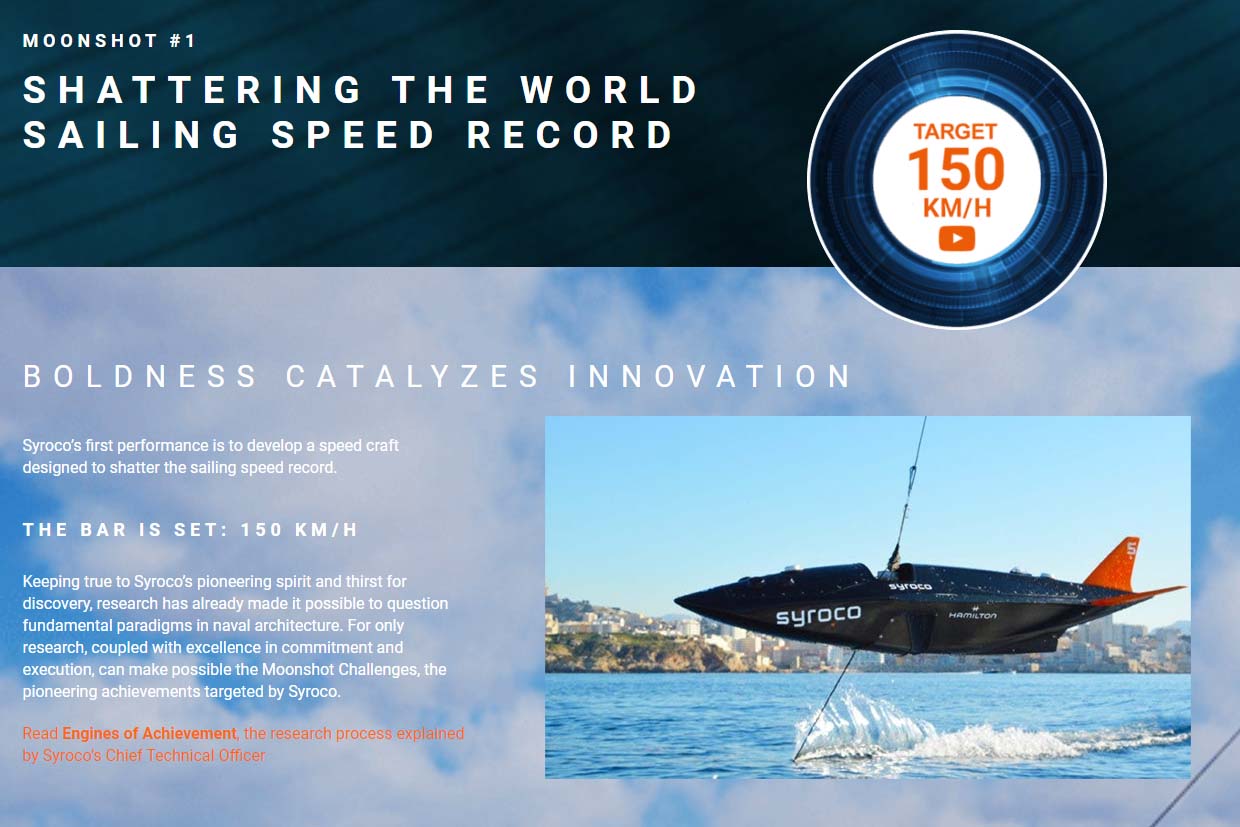
Did you know that the French startup Syroco lab is working on the fastest sailboat of all time. It should happen in 2022: a wind-powered boat has to break the speed barrier of 150 kilometers per hour. We explain how the team led by Alex Caizergues, 4 times champion kite speed , with a six-meter-long fish-shaped capsule that is pulled by a kite that wants to go over the water at 150 kilometers per hour.
Fastest sailboat in the world: 121 km/h
As of 2012 it is world speed record sailing remained unbroken. Because in November 2012, the Australian Paul Larsen reached 65,45 knots, a speed of 121 kilometers per hour. This is what he achieved with his Vestas Sail Rocket 2 when he blasted over the South Atlantic waters off the coast of Namibia. There are currently two rival teams looking to go above and beyond and build the fastest sailboat, or maybe kitefoil boat, in the world.
Syroco Moonshoot 1 facts
Origin fastest sailboat in sahara.
First of all, the name Syroco was deliberately chosen for the project. He probably appeals to sailors who have sailed in the Mediterranean. The Siroco is a warm savage southeastern wind that originates in the sandy plains of the Sahara desert. That is why Caizergues named his project after it.

Syroco - Sailboat but not as you think
Even though there is talk of sailing records, you have to forget the traditional sailboat concept for a while. Precisely because the Syroco can best be described as a six meter long fish-shaped capsule that is pulled by a kite.
We immediately had to think of how kitesurfing olympic could be. You remember sailing.
Other than kitefoiling
However, the fish-shaped capsule hangs above the water. Under the water, the angled hydrofoil should do the job. The wing of the foil and the mast are the only points of contact with the water at speed. From kitesurfing we see that kitesurfing brand F-one is an official supplier for the Syroco Moonlight 1.
'Weightless hunting' concept
As you can see in the video, the operation of the hydrofoil is different than we know with kite foiling and wing foiling. The Syroco foil provides counter pressure to the kite. In between hangs the yacht, which thus becomes weightless.
It's all about optimal aerodynamic and hydrodynamic distribution of opposing forces.
Test run passed
In December 2021, numerous test runs were carried out with the prototype of the Syroco Moonshoot 1. These were ultimately successful. At high speed, the Syroco came out of the water via a cable that simulated a kite to sail on the foils. look at it test runs report .
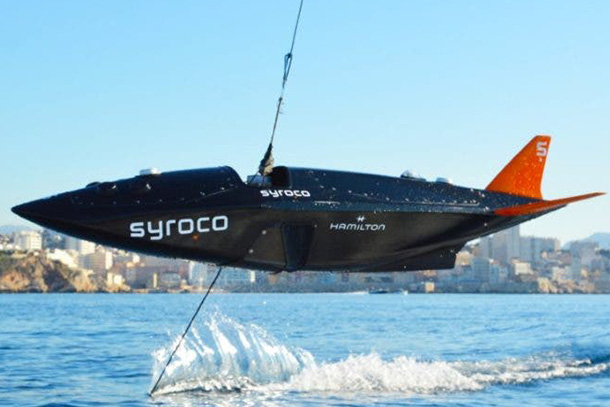
Keep control at 150 km / h
Two people go into the capsule who have to keep things in line. The kite must be controlled. The balance on the foil must also be found. And then again as optimal as possible in strong wind. Who to kitefoiling , wingfoiling or sail foiling, know that this is not easy.
The race is ambitious and will hopefully bring about breakthroughs
We know by now: set an impossible goal and work on it until it becomes possible. This is what helps companies like Apple and Tesla push the boundaries of technology. In fact, this is also Alex Caizergues' approach with Syroco. He wants to push boundaries and thus, as a channelizer for the maritime sector, realize new technologies and more efficient ways.
Formula 1 on the water in the future?
Another, hitherto speculative, line of thought is whether this project could develop into a new sport. A kind of Formula 1 on the water.
We follow the Syroco project closely. For now, take a look at how Alex Caizergues goes with kite surfing: 107,36 kilometers per hour.
Bonjour, j'ai découvert votre projet en regardant un JT en Nouvelle-Calédonie. Je ne pratique pas le kite (j'ai un peu pratiqué le parapente et très longtemps avant, l'avion CESSNA), but comprends certains principles. Si vous visez les 150 km/h, vous vous confrontez à un problème d'envol, donc de perte d'adhérence sur l'eau et comme ils n'ont pas des commandes de stabilization du monde aérien, le pilote perd le contrôle, il ne maîtrise pas la transition et n'a pas les commandes pour voler). Vous aurez surement ce problème selon comment souffle le vent, la manière d'orienter votre voile et la direction prize. And kite, in general, the picture is parallel to the kite surfer's plan. Sur les vidéos de Syroco Moonlight 1, votre voile est orientée perpendicularement à votre “bateau-coque de 6 mètres”, soit dans le sens d'un parapente allant en avant (qui peut être ascendant ou descendant selon la tenue des risers en extrémité de voile).
Je ne sais pas à quelle hauteur vous allez décoller si cela arrive, mais les chutes peuvent être violentes (au pire 20 mètres par sec) et entrainer de la casse. Je ne sais pas comment vous vous protégez en cas d'incident.
Autrement, même si la probabilité semble faible, la vitesse visée et votre foil dans l'eau risque de rencontrer des morceaux de bois, des animaux (qui seront blesser ou tuer), des filets… Don't forget to take the time to enjoy the food, enjoy the life of the flottants, the animals, the fillets.
Problem vous allez migrez vers un système “hydravion” avec des commandes avions pour le contrôle.
On the internet, on the basis of the décollage speeds: “Quelle vitesse pour faire decoller un avion? L'ordre de grandeur de la vitesse de décollage est de : 20 to 50 km/h pour les planeurs ultra-légers motorisés (ULM). 80 to 120 km/h pour les avions monomoteurs de loisir ou les bimoteurs à hélices d'affaire. 240 to 280 km/h pour les avions de ligne selon leur taille (A320, A380).”
Good continuation, Lauren HELLOUIN. ([email protected] et +687 815149)
Give a reaction cancel reply
The email address will not be published. Required fields are marked with *
Save my name, email on this site for the next time.
Related blogs and comments
Competition calendar dutch championships kite surfing update.

How much wind is needed for kitesurfing? Kiting options with 10 knots
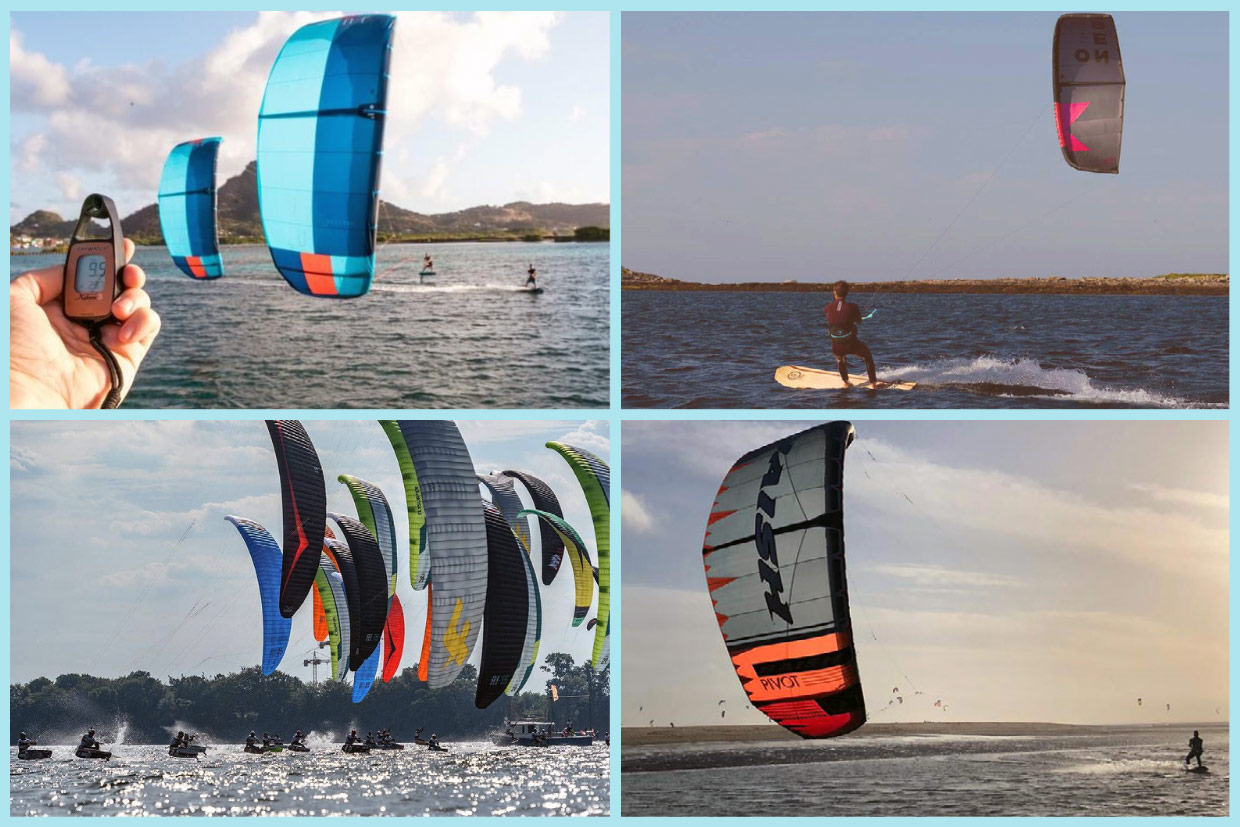
On the way to Olympic kitesurfing Paris 2024
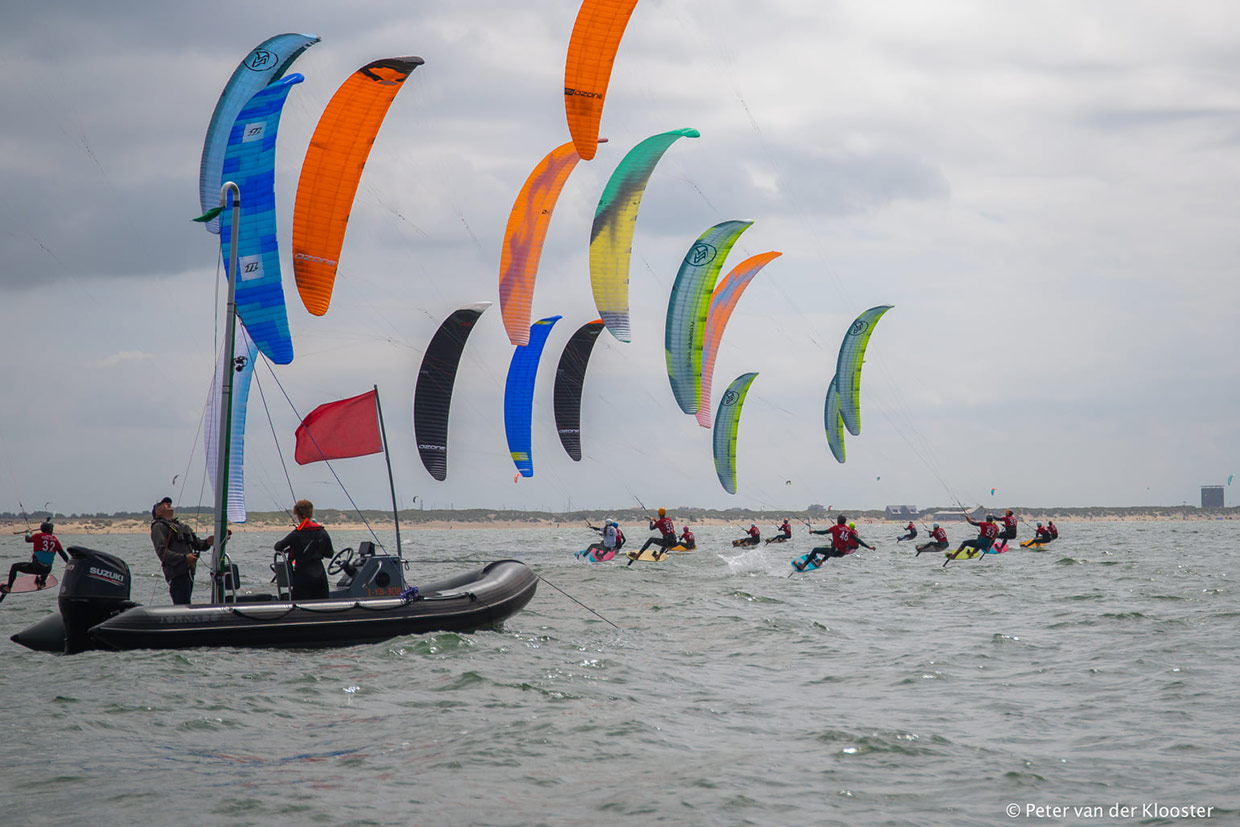
A record on the high seas: Cole Brauer becomes first US woman to sail solo around the world

On Thursday, Cole Brauer made history, becoming the first American woman to sail solo nonstop around the world. The 29-year-old from Long Island, New York, celebrated at the finish line in Spain by drinking champagne from her trophy.
Friends, peers and sailing enthusiasts had been cheering Brauer on since last October, when she embarked on her more than four-month journey.
Race organizer Marco Nannini told USA TODAY he started the Global Solo Challenge to "create a platform for sailors like Cole to showcase her skills and move on to a pro sailor career."
While at sea Brauer kept her more than 400,000 Instagram followers updated − and entertained − with videos from onboard First Light. The trip was extremely challenging and physically exhausting, Brauer said in one video from December.
In the post, she describes how frustrated she felt when she had to fix and replace different parts of the boat.
"I don't want you guys to think I'm like Superwoman or something," Brauer said. "Right now I've been feeling just broken," she added, describing how she had to fix the boat's autopilot system after injuring her torso against the side of the boat's hull amid intense waves.
Who is Cole Brauer?
Brauer is from Long Island and competed for the University of Hawaii sailing team. She went to high school in East Hampton, New York, her university team website says. She was the youngest of more than a dozen sailors, or skippers, in the Global Solo Challenge.
The professional sailor lives in Boothbay, Maine, and during the spring and summer, she can be also found in Newport, Rhode Island, gearing up for races, the Newport Daily News reported last year .
Brauer has sailed on First Light, a 40-foot yacht, for over five years, the outlet reported.
"I always said I wanted to race around the world in this boat," she told the newspaper.
From above and below First Light's deck, Brauer shared aspects of her journey with followers and die-hard sailing fans.
On New Year's Eve, she donned a dress and danced at midnight , and in another post, she showed off how many pull-ups she can do.
As the only woman racing solo, nonstop around the world in the first Global Solo Challenge, Brauer said she was determined to prove there's nothing women and girls cannot accomplish.
"I push so much harder when someone's like, 'No, you can't do that,'" Brauer told NBC Nightly News . "And I'm like, 'OK, watch me.'"
Brauer is the first American woman to sail solo around the world. But Kay Cottee of Australia was the first woman in the world to accomplish the milestone, sailing off from Sydney Harbor in Australia in November 1987 and returning 189 days later.
On her profile page on the Global Solo Challenge website, Brauer said she wanted to send a message to the sailing community that it's time to leave its male-dominated culture in the past. In the profile, Brauer took aim at a lack of equal pay and what she describes as harassment in the sailing industry.
"Just as well as this community has built me up it has broken me and my fellow female teammates down. I am doing this race for them," Brauer said.
Brauer and her spokesperson did not immediately respond to requests for comment.
How long was Cole Brauer at sea?
Brauer was sailing for over four months after departing on Oct. 29.
She finished second in the race, behind a sailor who departed about a month before she did.
The start times differed because that first place boat, Phillipe Delamare's Mowgli, is much slower, Nannini said, explaining the race's staggered start times.
"The format means that if you enter on a slow, small boat you can still win, which makes it much more inclusive than an event where a bigger budget is a definite advantage," he said.
France's Delamare will win first-place prize money of 7,500 euros (about $8,140), Brauer will win 5,000 euros (about $5,430) and the third place finisher will win 2,500 euros (about $2,710), Nannini said.
How dangerous was Cole Brauer's sailing race?
A medical team including a nurse and a physician trained Brauer and sent her on her journey with medicines and medical supplies, in case of any health issues, according to her Instagram account.
Early in the race, Brauer administered her own IV with a saline solution after she became dehydrated, according to one video posted to her social media.
Brauer's most serious health scare happened in early December when she said gnarly ocean conditions caused the boat to jolt, throwing her across the inside of the boat and slamming her hard against a wall.
Her ribs were badly bruised as a result, and her medical team told her to alternate between taking Advil and Tylenol, Brauer said on Instagram.
"Rigging up a sleeping seat belt has been added to my priority list," she said in the post's caption. "I know I'm very lucky that this wasn't a lot worse."
What is the Global Solo Challenge?
The inaugural Global Solo Challenge is a nonstop sailing race in which competitors departed last year from A Coruña, Spain.
The race encompasses nearly 30,000 miles and takes place mostly in the southern hemisphere.
After leaving waters off the coast of Spain, sailors travel south and around Africa's Cape of Good Hope. The race then includes the two other capes that together make up the famous three great capes: Australia's Cape Leeuwin and South America's Cape Horn.
About half of the other competitors dropped out of the race, according to racing data posted online by the Global Solo Challenge.
Delamare finished the race late last month after embarking on his journey in late September 2023, according to race data.
Contributing: Associated Press
Yachting World
- Digital Edition

Sailing the fastest offshore monohull, the ClubSwan 125
- Toby Hodges
- October 19, 2021
Yachting World's Toby Hodges sails the radical new ClubSwan 125 Skorpios and gives you a tour. Skorpios is the largest entrant in the Fastnet ever and took line honours weeks after launch in 2021
It’s tricky to gauge speed and scale against anything else when you have to sail a few miles offshore to avoid dredging the English Channel. Nevertheless, sailing onboard the new ClubSwan 125, I could tell that great stretches of the UK’s coastline, passages that would normally drag by over hours, were ripping past at a velocity that made me question my knowledge of known landmarks.
Aboard Skorpios , the imposing new ClubSwan 125, we’re not talking outright silly peak speeds, but more the sheer unrelenting consistency of the high speeds. At 140ft including bowsprit, Skorpios is, by any scale, a beast which, under its substantial sail area, becomes an uncompromising, fiendishly powerful mile-muncher.
Standing at the windward helm when powered up feels so high above the water it’s akin to leaning out of a second storey window. And with over 20 top professional crew sitting on the rail in front of you it is an awesome, slightly terrifying and utterly captivating experience.
However, this is not a Swan built for helming pleasure, rather with a ruthless brief to be the first monohull home in the big offshore races and to rewrite ocean records.

Skorpios is skippered by the Spanish Olympic Tornado gold medallist Fernando Echávarri, a former Volvo Ocean Race skipper.
The adrenalin of sailing the ClubSwan 125 Skorpios is perhaps heightened by the fear of the unknown: everything about this yacht seems to be on another scale altogether. This is, by some margin, the biggest offshore racing monohull, and certainly the largest ever racing Swan. It boasts possibly the deepest draught non-lifting keel (7.4m) and the largest sailplan combination ever conceived. In short, Skorpios is a seemingly limitless source of superlatives.
Skorpios is the largest monohull to have raced in the Fastnet Race to date, and, as its designer Juan Kouyoumdjian pointed out with a certain glee, it has been issued with the highest IRC rating ever awarded.
Not that handicaps will be of concern – it’s out for line honours only. That it duly succeeded at such a task at the first time of asking is all the more impressive considering the gun for this year’s particularly boisterous Fastnet start was fired just two months after the boat splashed.
This was also the first offshore race for the yacht’s owner Dmitry Rybolovlev. Sometimes it takes an ambitious owner with a substantial chequebook to make a meaningful step forward in design and engineering, and produce a ripple effect in technology.
In the case of ClubSwan 125 Skorpios it was Russian businessman and philanthropist Rybolovlev who fell for the idea of a record breaker after tasting racing victory on his ClubSwan 50 . The contract was signed in February 2017 and, four years and a pandemic later, his near three times larger version was wheeled out of Nautor’s famous Pietarsaari yard.
Just a month after its June launch, and during an intense work up period before the Fastnet, I was invited to join Skorpios for a day’s race training.
Science project
The isle of Portland is one of the few safe ports around the English Channel with a deep enough berth for Skorpios . From Dorset’s Jurassic Coast cliffs miles to the west, a single mast stands out on the horizon and as I approach through the commercial dockyard, the scale of Skorpios seems to keep increasing. It’s simply enormous, unlike any other yacht I have seen.

Enough sail? Skorpios off the Dorset coast. The ClubSwan 125 is named after owner Rybolovlev’s famous Greek island, where Jackie Kennedy married Aristotle Onassis. Photo: Mark Lloyd / Lloyd Images
Testing systems and sea trialling for race prep takes a significant amount of sea room on a craft of this size. Thankfully we have ideal 17-22 knot conditions to encourage a long day afloat.
“We’re going to stay two to three miles offshore and sail down to the Isle of Wight,” Fernando Echávarri announces to the crew. The quietly spoken team skipper, a Spanish Olympic Tornado champion, assembled a crack team around him during the build and seems to have the unflappable composure needed for such an endeavour.
Article continues below…

Canova – The foiling superyacht designed for comfort
Were you to somehow be teleported into foiling superyacht, Canova’s palatial master cabin while under way – and let’s face…

Video: Comanche – Matthew Sheahan gets aboard the world’s fastest monohull
Setting the start line ends in your chart plotter two days before the race may seem a little over eager,…
I crane my neck as 660m2 of black 3Di mainsail is hoisted up a mast that scales 59m from the waterline, high enough for the enormous 5.5m gaff of the squaretop to be in a totally different weather system.
“This boat’s a real science project,” says Miles Seddon, reading my mind as he joins me on the aft quarter rail. The British pro navigator has stepped aboard to give some local knowledge during the Fastnet build-up.
“There are so many systems, load sensors, fibre optics etc all trying to integrate… and all are logged at 10Hz so everyone can monitor it (aboard and ashore).”

The giant ClubSwan always sails heeled and the apparent wind never really goes aft of 80º. Photo: Mark Lloyd / Lloyd Images
With loads too high for human power onboard the ClubSwan 125, the grunt is all left to hydraulic pumps to drive winches and movable appendages. Hence the ability to monitor all loads constantly is reassuring and educational.
Nevertheless, I recognise many of the faces of the international crew who have amassed dozens of America’s Cup , Volvo Ocean Race and Olympic wins between them. The size of this craft and its level of tech places it in a high-risk category, so the ability to sail this ‘project’ safely and to the optimum, particularly with such a short training period, requires all their skill and experience.
Key crewmembers talk sporadically through their headsets, which are covered by neck scarves to try to protect against apparent winds that are typically gale force. It’s all coded language, acronyms and target talk – we are in test pilot territory here.

thrill of a lifetime as YW’s Toby Hodges gets behind the wheel. Photo: Mark Lloyd / Lloyd Images
As 1,300m2 of A3 (asymmetric spinnaker) is unfurled we accelerate from a 10 knot canter straight to the high teens. Then out come the J4 (jib) and IRS – the bright orange sail which rates as a storm jib – to fill the large slots and Skorpios is immediately into the 20s.
I record the angles and speeds throughout the day and, looking through these later, it’s their consistency at which I marvel. “We are sailing with nearly 2,400m2 in a 59-tonne boat – so it’s pretty powerful!” Echávarri remarks. Indeed the sail area to displacement ratio of 67.8 is mind boggling.
50% Movable ballast
“Designing a racing sailboat, able to reach a speed in the region of 15 knots upwind and that will always be faster than the wind speed downwind is something unique,” comments Juan K.
The Argentinian designer, who was aboard for our trial, explains that he chose a canting keel in order to keep the displacement under 60 tonnes, which allowed for the necessary righting moment with a smaller bulb.
However, this was not always the plan. The ClubSwan 125 was originally conceived by Nautor as more as a performance cruiser-racer with teak decks and a full interior.
The decision to remove these saved an estimated six tonnes immediately. And once the owner said he wanted to go really fast, the design was continually re-evaluated. The original keel proposal was a complex telescopic/canting mechanism, so replacing that saved another 2.5 tonnes. The interior was also adapted, designed by Adriana Monk to be very minimalist and practical for offshore sailing.
The canting angle of the keel increased from 38° to 42° and a trim tab was added. The potential lift and righting moment benefits this can give were one of the areas the crew were looking at during our sail.

sailing triple-headed makes for a lot of halyard tails and sheets to keep tidy. The smart dodger was a late addition, for protection and to keep the companionway dry. Photo: Mark Lloyd / Lloyd Images
“With a canting keel you need another appendage to produce the required side force. That is provided here by a C-foil, a hydrodynamic asymmetrical foil, but symmetrical from port to starboard, that can be tacked each side of the boat,” Juan K explains.
He estimates that this is less weight than two daggerboards and can help the boat reach a ‘skimming’ attitude when reaching. “It doesn’t give you the performance of side foils, but without the C-foil there would be 5-7° leeway. With the foil, there is zero or even negative leeway with the keel canted.”
Then there is also the equivalent weight of an average 40ft cruising yacht in water ballast, housed in 5,000lt and 3,000lt tanks each side. These take 45 seconds to fill and 30 seconds to transfer from one side to another.
“It’s righting moment without the weight in light airs,” Juan K elaborates. When more than half the weight of the boat can be shifted from side to side, pushing the correct buttons becomes imperative.
After a couple of hours in downwind mode, we’re now somewhere south of the Island and furl to gybe. An army of muscle manhandles the trunk of furled A3 onto the deck and into a bag so it can be lifted by halyard and deposited across the aft deck in preparation for the first upwind leg.
It is while briefly parked like this that the alien noises, reverberations and discomfort start. Every element of this craft is designed around speed, so restrained like this, the giant Skorpios groans and shudders like a tethered animal and the raw vibrations are felt right through to the aft deck.
ClubSwan 125 weight and windage
We’re given a steady 20 knots true for our first beat, which is on the limit of a reef in this sea state. Yet with or without a reef, we still average 14 knots at 25° to the apparent wind.

The single C-shape daggerboard is moved hydraulically from side to side to negate leeway and when fully retracted still sticks out by 80-90cm. Sensors continually inform the crew about the loads on the board. Photo: Mark Lloyd / Lloyd Images
The harmony of the rig and sail package on the ClubSwan 125 is impressive. Southern Spars designed the high modulus mast, 60ft boom and 23ft reaching strut in combination with sister company North Sails and its Helix structured luff technology. The company says it’s one of the most advanced rig packages it has ever delivered.
The tack points were originally designed to take much higher loads, but the advances in structural luff technology and load sharing means that these point loads have greatly reduced, project manager Bob Wylie tells me. “The J2 was originally designed for 45 tonnes, yet the current tack load is around 25 tonnes.”
Future Fibres’ Aerosix rigging minimises windage. “Considering the speeds and the close apparent wind angles you’re sailing at, everything contributes to speed,” comments Echávarri, who is most impressed with the comparative reduction in vibration this rigging brings.
The highly raked mast can be finely tuned with checkstay and backstay deflectors. “To set all the sails needs a bit of play between the mainsheet trimmer and the runner trimmer,” Echávarri explains.
“The J0, which is tacked to the bowsprit, is 550m2. So with the 660m2 main we can go upwind with about 1,200m2, which is a big load!” the skipper exclaims. Occasionally we slam through or over a wave and the vibration is gut wrenching.
Otherwise, however, it’s comparatively quiet speed sailing, with hardly any noticeable wake, just the firehose of a rooster tail spraying from the stern as Skorpios planes along continuously like a giant 49er.
Twin rudders are used for control as Skorpios always sails heeled. These have Juan-K’s trademark sawtooth profile which he compares to the tubercles of a whale. They are designed to limit drag when dipping in and out of the water and to prevent the blades from stalling.
The toe-in system, which changes the angle of attack of the rudders, is adjusted from on deck using a geared system first developed for the VO70 Groupama. “You want the windward one to have the least drag,” Juan K explains. “For downwind VMG sailing we’re looking at 11-15° heel, reaching is 20-25° and upwind is 25°. At around 21° the windward rudder stops touching the water – it’s ideal when it’s just kissing the water.”
Life at heel
While you are certainly aware of the near 30ft of beam when sailing upwind on the ClubSwan 125, it doesn’t feel like alarming levels of heel. Skorpios tracks along on its chine, while on deck the SeaDek closed cell foam decking provides excellent grip and the aft companionway and mainsheet plinth help to break up the large cockpit spaces.
The deck design is remarkably uncluttered and kept deliberately simple, meaning minimal winches and lines on deck. The use of multiple furling foresails, similar to a racing multihull or IMOCA 60, helps simplify manoeuvres. One of the neatest features is having the furler lines all lead under deck.
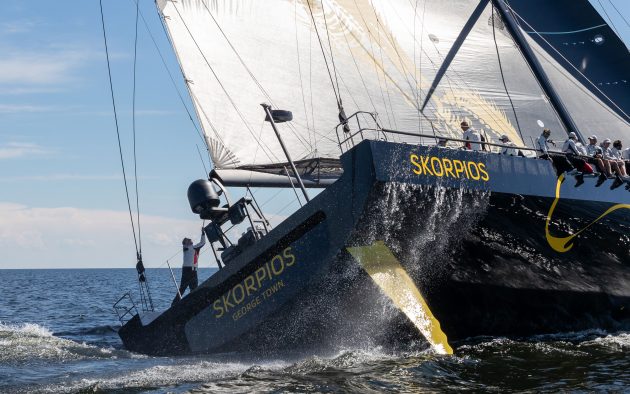
Sailing Skorpios requires the balancing of phenomenal sail area with moveable ballast and righting moment, while keeping the boat on a narrow (heeled) waterline beam. Photo: Mark Lloyd / Lloyd Images
“They have to be,” comments Wylie, “imagine a 450kg sail sitting on them – they wouldn’t shift!”
A keyboard of constrictor clutches are also used under the deck and the headsails are all on halyard locks, as are the three mainsail reefs. Lights and alarms display when these locks are engaged and then there are sensors everywhere, says Echávarri – “in the hydraulics, linear sensors between cables and sails, on vertical shrouds, on winches etc.”
During our second uphill leg I spend some time at the forward end of the rail’s crew stack filming and getting duly soaked. It really hits home how relentless and potentially exhausting it is sailing in such high apparent winds. It’s little wonder IMOCAs and Ultimes have dramatically increased their protection and aero packages.
Meanwhile, out to windward the chase boat bounces along with photographer Mark Lloyd aboard trying to steady himself. Not many powerboats could keep up with the ClubSwan 125 Skorpios in these seas, but this is no ordinary tender. Theirs is a 15m carbon catamaran, complete with 1,200hp of outboard propulsion, which was built in New Zealand in parallel development with Skorpios .
“When we decided to go lighter and lighter, the anchor became a big factor,” Echávarri elaborates. With a 7.4m deep keel, Skorpios will have to rely on its anchor gear, so the tender was designed to carry and deploy the main anchor and 600kg of chain. And because of the mothership’s restrictive draught, this chase boat also has the tanks to fuel bunker, while a sawn-off bow allows it to nudge up to the transom to unload supplies and swap sails. The sheer scale of this project!
And then it happened… one of life’s golden moments. I am offered a glory spell on the wheel. We are smoking along, sheets ever so slightly cracked, making a steady 15-16 knots in 18 knots of breeze and Skorpios is like a freight train, unwavering in its speed and line.
Occasionally I glance the long way down to the leeward rail and see the whitewater shooting past. It makes me giddy. Concentrate on the numbers Toby, this is no time to lose focus.

Minimalist saloon with canting furniture. Photo: Mark Lloyd / Lloyd Images
So much power is felt through that foam-gripped composite wheel. On the pedestals are a hydraulics cut-off, a Jonbuoy release button, a high load alarm, and controls for the canting keel and trim tab. Needless to say I keep my hands on the wheel. The sheets are left alone as we charge back towards Portland, full steam, while I try to log every second in my long-term memory bank.
When the decorated Olympic and round the world sailor Xavi Fernandez turns round from the rail and asks me how it feels on the helm, I am lost for words and simply grin.
Echávarri sums up our sail more casually; he’s concerned with stats not emotion. “Today was a good day. Let’s say we were pretty good in performance – 95-98% of VPPs, which is good when there’s still a lot to learn.”
I simply tremble with nervous adrenaline… for days.
Building a beast
“The opportunity to work together with the greatest boatbuilders, designers and technicians around the globe, was awe-inspiring,” says Leonardo Ferragamo, Nautor’s Group president. Nautor’s Swan conceived and built the yacht in Finland, but with so many teams and subcontractors involved, Skorpios is more a custom race boat than a conventional Swan.
“A team of 30 was initially brought in to laminate the hull,” says Bob Wylie, while explaining the challenge of maintaining a workforce during Covid times. Grand-Prix raceboat construction techniques were used, including unidirectional prepregs and honeycomb nomex cores, with monolithic construction below the chine.

engine room contains the twin 400lt carbon hydraulic tanks and the mast base (mast jack load at full dock tune is around 90 tonnes!). Otherwise it’s just an engine and a spare genset, but no domestic batteries, chargers or inverters. Photo: Mark Lloyd / Lloyd Images
Post sailing we have a chance to look below decks of the ClubSwan 125 and it’s way more Spartan than I had been expecting. There is some cabin comfort for overnight races and a focus on safety in the saloon for guests. That’s it.
“As you get faster and faster you start to think of the security on board,” Echávarri explains. “We developed a super light, safe interior which is minimalist and nice looking.” The saloon seats rotate over a central hinge to suit the heeling angle and the table cants at multiple angles on titanium hinges. The ‘galley’ is a gimballed microwave on a central bulkhead unit with fridge below (“this is all we allow them,” Echávarri grins). Otherwise it’s just pipe cot-style bunks each side of the saloon and a day heads/shower.
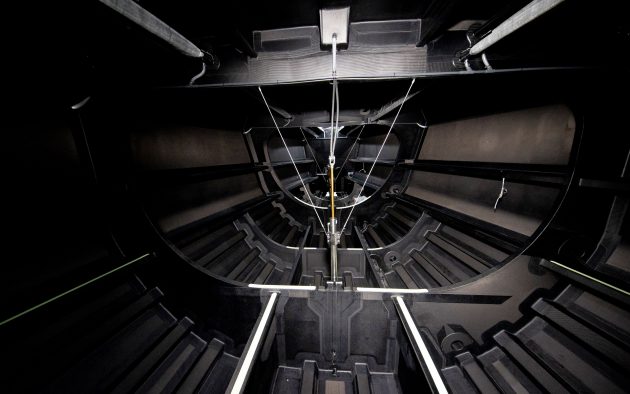
The forepeak is known as the cathedral for its exhibition of bare structures, stringers, bulkheads and longitudinals. Photo: Mark Lloyd / Lloyd Images
The minimalist nature encourages you to focus on the build and finish quality, which is quite remarkable. A closer look at the bulkheads and doors reveals they are all bare carbon. Bar the deckheads and sole panels there are no liners, no panels, not even a drop of paint. It really is a Formula One shell built and finished with Nautor quality.
Move forward from the saloon and you won’t find any of the luxury cabins or accommodation you might expect on a large Swan, just a bare central engine room, the foil casing and acres of the black stuff. See for yourself on our walkthrough video on yachtingworld.com
What’s the goal?
“At the moment the challenges are the races – the Fastnet, the Middle Sea Race,” says Echávarri. “And slowly we will see the real potential. The concept didn’t start with a record breaker brief and we don’t know if it will be faster than Comanche yet. If we feel like it has the potential, we would like the north Atlantic.”
Whether speed is best measured for you on a Moth, SailRocket, an Ultime trimaran or this goliath, those who push for line honours and records will always make headlines. The ClubSwan 125 could potentially set a new bar in that respect. And by taking line honours in its first event, Skorpios has already proved it’s got the necessary sting in its tail.
If you enjoyed this….
Yachting World is the world’s leading magazine for bluewater cruisers and offshore sailors. Every month we have inspirational adventures and practical features to help you realise your sailing dreams. Build your knowledge with a subscription delivered to your door. See our latest offers and save at least 30% off the cover price.

15 Fastest Boats In The World | 2023 Edition
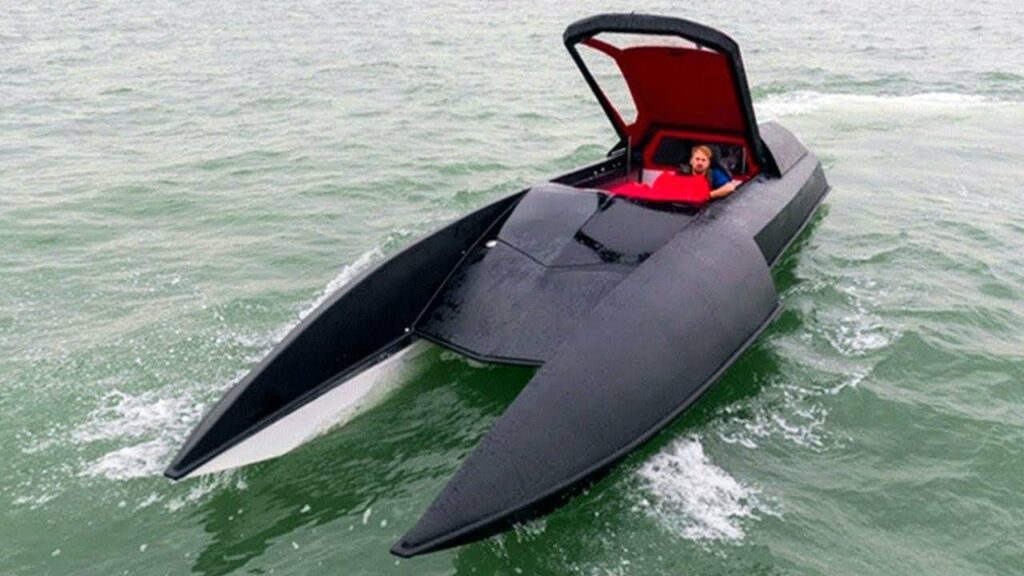
What are the world’s fastest boats? Keeping track of the world’s fastest cars is easier; when it comes to boats, things get a little more tricky. Various vessels travel on the water, varying in size, shape, and how they move. Humans have been concerned with speed since the invention of the wheel.
Also, people’s need for speed and excitement has led to the creation of speed boats that can go so fast that they almost sear the waterbed. The twenty-first century has created some of the world’s fastest boats. Most modern speed boats can reach a speed of up to 100 miles per hour, with some exceeding 170 miles per hour. Continue reading the article to learn about the 15 fastest boats in the world as of 2023. With further ado, let’s begin.
Lamborghini 63 – 69 MPH
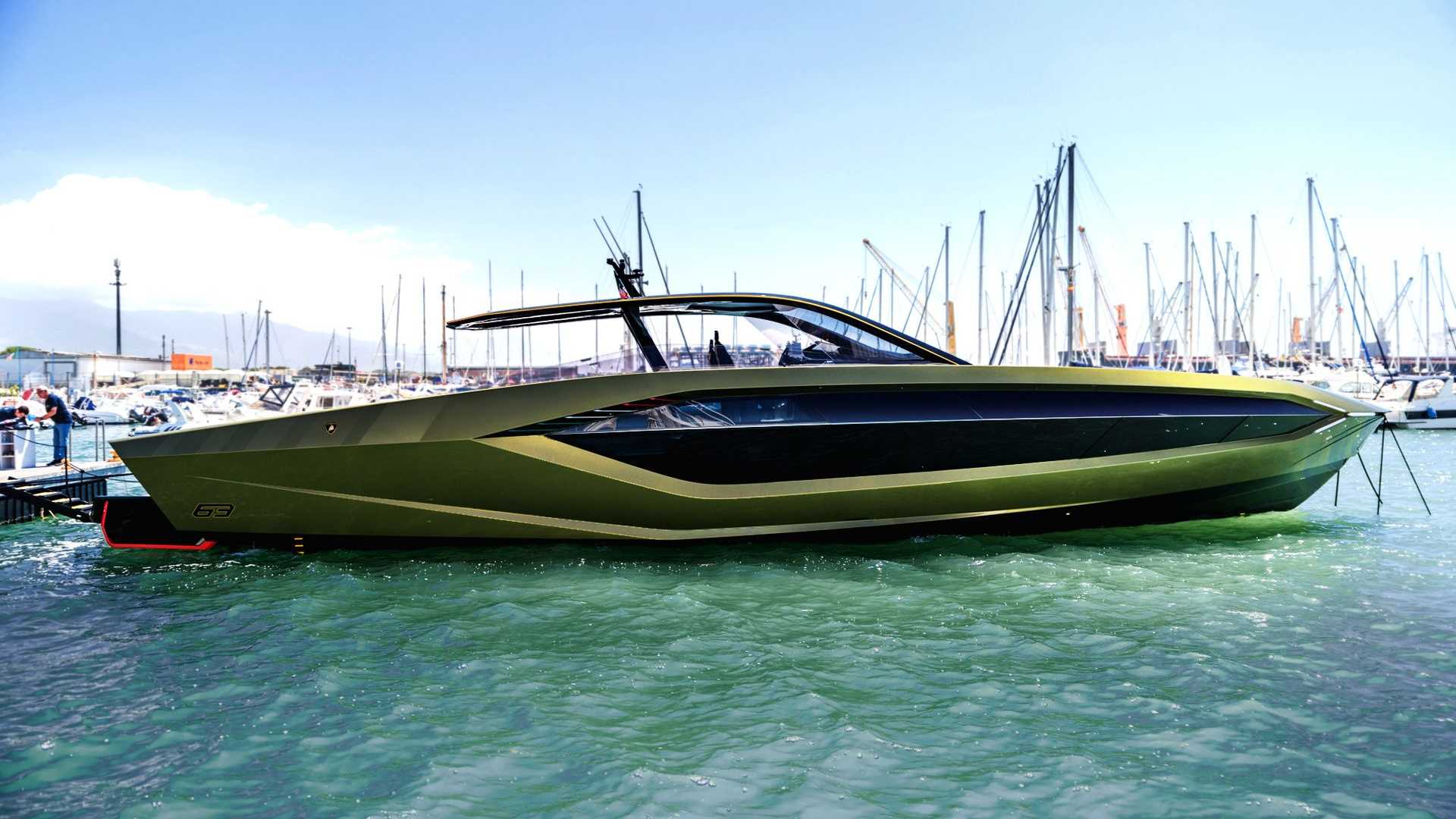
The yacht “Tecnomar for Lamborghini 63” is more than just an exercise in style and design; she also represents cutting-edge luxury speed boats. The Lamborghini 63 yacht’s advertised top speed is 60 knots, which equates to an impressive 69 miles per hour .
In the world of yachts, this is a fast boat. At cruising speed, it consumes about 100 gallons of fuel per hour, giving it a range of about 360 nautical miles.
Vestas Sailrocket 2 – 70 MPH
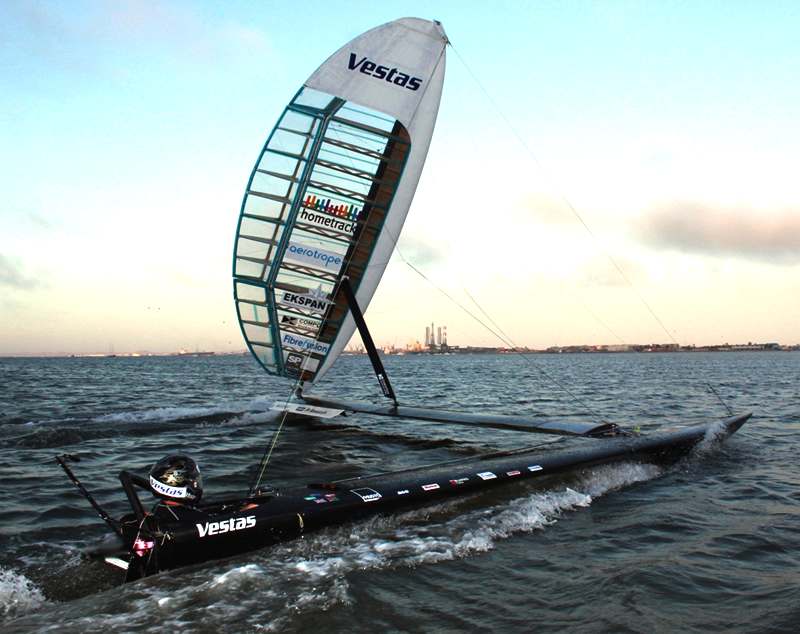
The Vestas Sailrocket 2, designed by Paul Larsen, is one of the most extraordinary and fascinating boats, setting a new world speed record of 70 mph in 2012.
The empty weight of the Vestas Sailrocket 2 is 275 kg. It measures 12.2 m long and 12.2 m wide, with a total wing area of 22 m2. The Vestas Sailrocket was made to break the B-class’s speed record for sails between 150 and 235 square feet.
HMCS Bras d’Or – 72 MPH

HMCS Bras d’Or (FHE 400) is a Canadian hydrofoil that served the military from 1968 to 1971. During sea trials in 1969, the ship exceeded 72 mph , making it the world’s fastest unarmed warship.
From 1960 to 1967, the vessel was built for the Royal Canadian Navy as part of a project to test anti-submarine warfare technology on an ocean-going hydrofoil.
Outerlimits SV-52 – 100 MPH
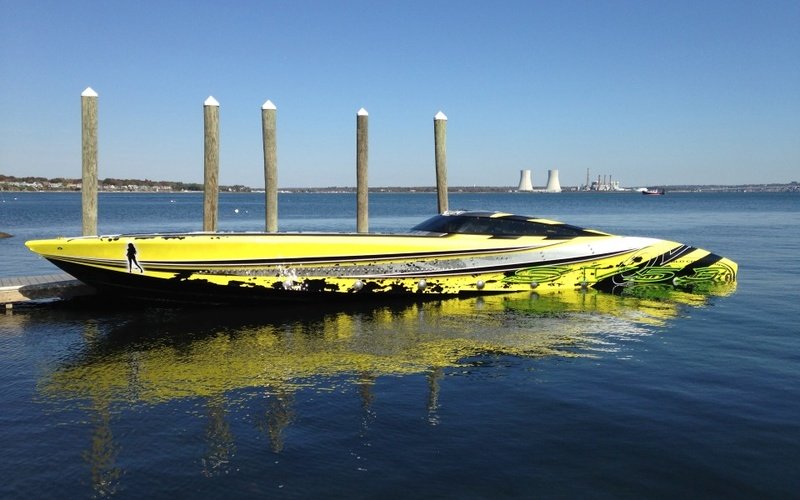
Outerlimits Power Boats has a large selection of high-speed power boats. The SV-50, SV-52, SL-44, SL-52, and even catamarans like the 43CAT and 48CAT are among their fastest boats. One of their quickest speedboats is the SV-52.
It was made to work well at high speeds and is known for its smooth ride and soft landings, even in rough and choppy waves. The cockpit features twin helm controls and a typical GPS chart plotter. Most models also have a half-cabin where you can store extra gear or get much-needed shade from the sun and sea.
This 52-foot-long beauty can reach over 100 mph in even the most severe conditions. It has a fuel capacity of 250 gallons and can comfortably seat up to four people.
South Bay 925CR – 114 MPH

The South Bay 925 CR is the fastest pontoon in the world. Brad Rowland’s South Bay 925 CR set a new world record with a speed of 114 mph.
It includes superior Garmin GPS navigation. Its length of 27 feet and beam of 8 feet make it ideal for someone who does not require a large speed boat.
The South Bay 925CR comes standard with a Manual Sport Arch, a 4-speaker Bluetooth stereo, and interior and exterior LED lighting. If you want to create the perfect party atmosphere, you can even use underwater LED lights.
Fountain 47 Lightning – 115 MPH
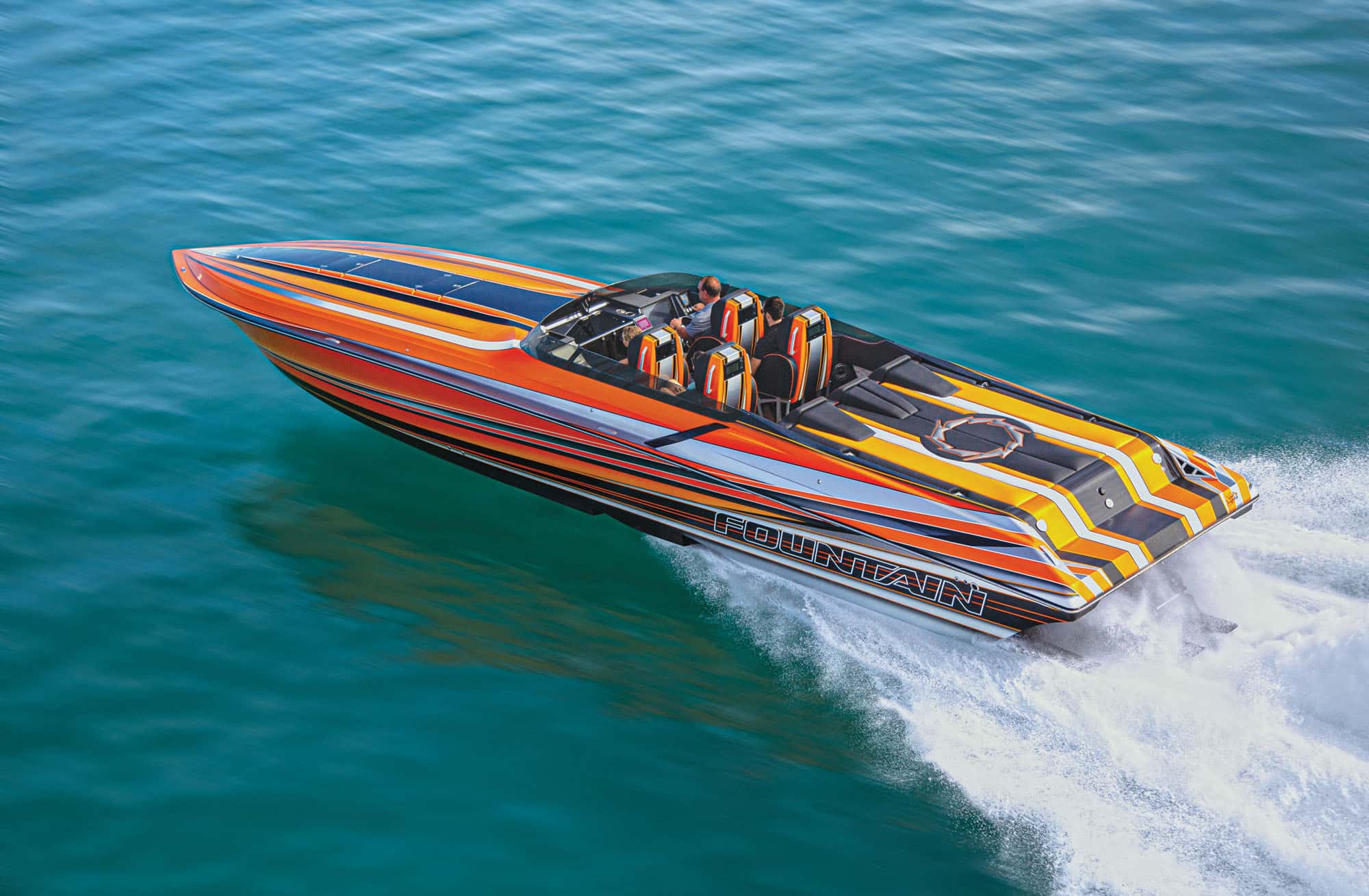
The Fountain 47 Lightning, as its name suggests, is speedy. The Fountain 47 Lightning has a top speed of 115 miles per hour . Its size is 47 feet, and it can seat up to four people. Its incredible speed is due to the twin Mercury Racing 1,075 HP engines.
The fuel tank has a capacity of 340 gallons and a Fuel Vapour Detection system. The Fountain 47 Lightning comes with a Garmin GPS, LED push-button switches on the navigation dashboard, and Vessel View instrumentation.
Cigarette Racing Team 50 AMG GTS – 135 MPH

The cigarette-shaped 50 AMG GTS is regarded as one of the world’s fastest electric speedboats. It is powered by a 2200 HP AMG electric engine, which also powers the world’s most powerful and fastest electric car, the SLS AMG Coupe Electric Drive.
This supercharged electric speedboat is powered by a lithium-ion battery with 3,456 lithium-ion cells. The powerful battery pack can store power at 400 volts and provide a maximum driving current of around 6,000 amps.
This daring speedboat has two chargers with a total charging rate of 44 kW, a full charge that takes only seven hours, and a top speed of 135 mph .
The Nor-Tech 5200 Roadster – 150 MPH
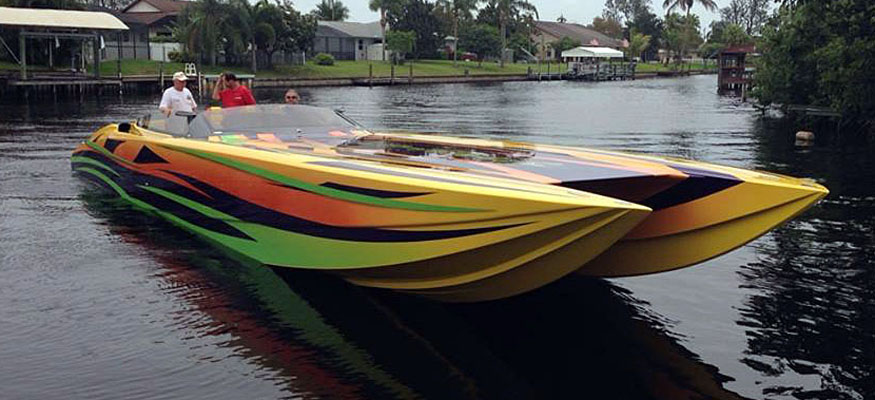
The Nor-Tech 5200 Roadster is a huge boat that can accommodate up to ten people. The 5200 Roadster may reach speeds above 150 mph . The 5200 Roadster features 5400 HP engines and a 400-gallon fuel tank, making it one of the most potent boats on the water. In addition to its unrivaled speed, the Roadster is the pinnacle of luxury boating.
A comfortable sun couch, a swimming platform with a boarding ladder, and video monitors are included. The Roadster also has a cutting-edge sound system and aft-facing seats with coolers. Nor-Tech can also provide a variety of combinations to meet our engine specifications.
Mystic Powerboats C5000 Turbine – 160 MPH

Mystic Powerboats of Florida manufactured the Mystic Powerboats C5000 turbine. Powered by two 1850 HP engines, it has a total engine power of 1850 HP and can achieve 160 mph with ease. The C5000 is believed to be one of the world’s most powerful speedboats.
The C5000 is more than 51 feet long and has technology like a GPS, plotter, navigation center, and log speedometer. The radio, CD player, and cockpit speakers are a few more features that will make your trip more fun. This ultra-quick catamaran also features cockpit air conditioning.
Skater 46 Pleasure – 165 MPH

Skater 46 Pleasure is a fast and powerful boat. The Skater 46 Pleasure has two Teague Custom 1500 HP engines. The Skater has dual fuel tanks with a full capacity of 1,000 gallons. It can easily cruise at over 100 mph for long periods and is made to land smoothly in stormy weather.
The Skater 46 Pleasure is one of the fastest motorboats available today, with top speeds of nearly 165 mph. Its roomy design may accommodate up to five people. Its clever design lets you feel the thrill of speed while still being able to sit back and enjoy the ride.
Lamborghini Aventador Super Veloce – 180 MPH

Lamborghini’s Aventador Super Veloce is a 52-foot custom-built speedboat powered by a 1550-horsepower engine capable of reaching up to 180 mph . The ship’s features include custom LED lighting and carbon fibre accents.
The speedboat has a six-person cockpit with customized buttons and dials that look like car dashboards. For example, the “Race” and “Pleasure” keys switch between the boat’s top speed and easygoing pace.
Spirit Of Qatar – 244 MPH
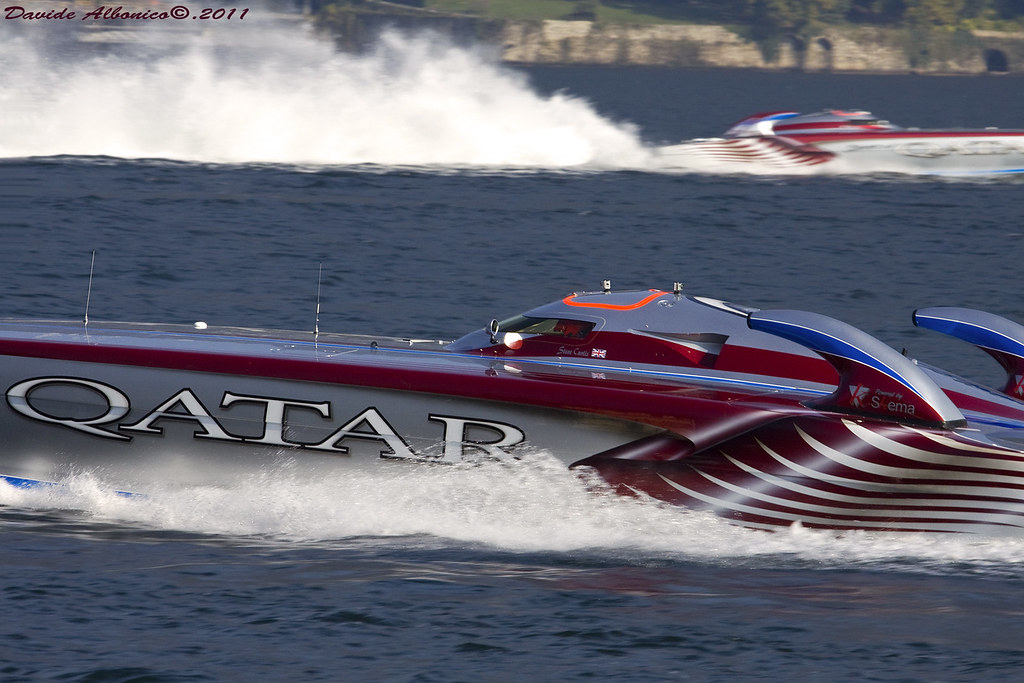
This vessel is now the world’s fastest catamaran and ranks fifth on the list of fastest boats. The Spirit of Qatar is a catamaran capable of reaching an insanely high speed of 244 miles per hour , thanks to using a pair of Lycoming turbines that together produce 9,000 horsepower (212 knots). The Spirit of Qatar, with its 50-foot length and plenty of turbine power, is a real show-stopper.
Problem Child – 262 MPH

The Problem Child is the fastest nitro drag boat in the world. Its nickname, ironically, comes from its super-fast speed capacity. Eddie Knox’s Problem Child is the world’s fastest drag boat, powered by an 8000 HP motor.
How fast can the world’s fastest boat go? It can reach up to 262 miles per hour in just 3.5 seconds. Isn’t it incredible?
The Problem Child is the ultimate water-speed machine. This speedy monster appears to fly over water and is known to leave behind a wall of water as it races through the water at speed exceeding 250 mph.
Bluebird K7 – 276 MPH

The Bluebird K7, one of the oldest and fastest hydroplanes of the twentieth century, is regarded as a speedboat pioneer. In this incredible hydroplane, Donald Campbell set records for the fastest water speeds in the 1950s and 1960s.
Between July 1955 and December 1964, he set seven-speed records. Surprisingly, the Bluebird K7 managed to reach 276 mph in 1964. Unfortunately, Campbell died in 1967 while attempting to set a speed record of 300 mph.
Between October 2000 and May 2001, the Bluebird’s wreckage was recovered. Campbell’s daughter officially presented the recovered wreckage of the Bluebird to the Ruskin Museum. The Bluebird Project is said to be conducting trials to restore the Bluebird K7 to Scottish waters.
Spirit Of Australia – 317 MPH
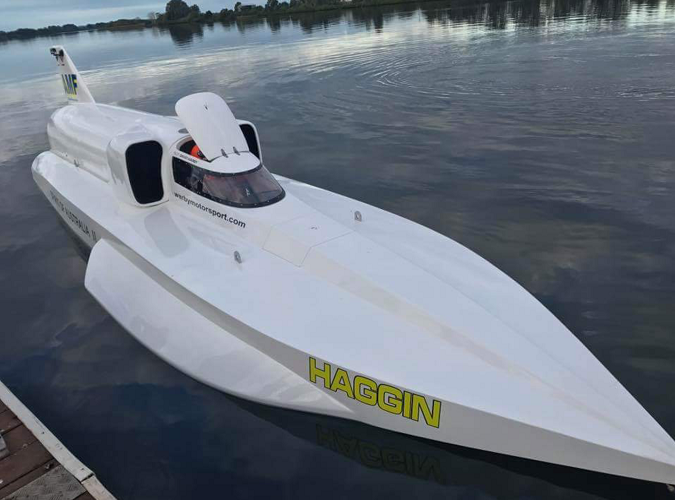
Would you believe Ken Warby built the Spirit of Australia in his backyard, which holds the world record for the fastest speed of 317.6 miles per hour ?
The wooden speedboat is powered by Westinghouse J34 jet engines, also used in planes and combat jets. The Spirit of Australia is also permanently displayed at the Australian National Maritime Museum.
Many people have tried and failed to break Warby’s world water speed record. However, Warby built the Aussie Spirit as a successor to the Spirit of Australia.
The Bottom Line
We’ve compiled a list of the fifteen fastest boats in the world, ranked by their highest miles per hour. In boats, jet and turbojet engines are mounted on a solid hull that cuts like a razor through the water. Currently, the jet-powered Spirit of Australia holds the Guinness World Record for the fastest boat in the world, clocking in at 317.6 mph.
Of these 15 fastest boats in the world, let us know which one you liked the most.
Related Posts

SailGP Named to Fast Company’s Annual List of the World’s Most Innovative Companies of 2024
SailGP, one of the fastest growing global sports and entertainment leagues, has been named to Fast Company’s prestigious list of the World’s Most Innovative Companies of 2024. In its debut, SailGP secured a No. 5 ranking in the sports category, recognized as “a racing league that is providing a more exciting (and sustainable) experience for fans.”
This year’s list shines a spotlight on businesses that are shaping industry and culture through their innovations. These organizations are setting new standards and achieving remarkable milestones in all sectors of the economy. Alongside the World's 50 Most Innovative Companies, Fast Company recognizes 606 organizations across 58 sectors and regions.

SailGP features high-tech, high-speed 50-foot foiling catamarans that are raced by the world’s best athletes in 10 national teams and broadcast in over 200+ markets (CBS and YouTube in the U.S.). In Season 4, underway now, the global sailing league hosts 13 events at the most iconic waterfront locations around the world – four of which take place in the U.S. including New York, Los Angeles, San Francisco and Chicago.
SailGP CEO Russell Coutts said: “It’s an incredible achievement to have SailGP honored by such a distinguished media outlet like Fast Company. SailGP has accomplished so much in its first five years and 2024 is set to be our biggest year yet, as we continue to break through to new audiences with our fan friendly, high speed and drama-filled racing.”
While technology and purpose is in SailGP’s DNA, it’s surrounded by athleticism, adrenaline and incredible competition. Since its inception in 2019, the league pushes the boundaries of sports technology and sustainability through innovations such as the Impact League – the league’s second podium for the planet that runs alongside the competition on the water – to using technology and augmented reality graphics to make the sport understandable to non-sailing fans via ‘LiveLineFX’, and leading the way in extreme sports production and embedding remote broadcast since its inception.
SailGP competes this weekend in Christchurch for the ITM New Zealand Sail Grand Prix, and then returns to North America to finish Season 4 in Bermuda, May 4-5, followed by the first ever Canada Sail Grand Prix in Halifax on June 1-2. The league then returns to New York City, June 22-23, for the Mubadala New York Sail Grand Prix and finishes in San Francisco for its Season 4 Grand Final showdown, July 13-14.
“Our list of the Most Innovative Companies is both a comprehensive look at the innovation economy and a snapshot of the business trends that defined the year,” said Fast Company editor-in-chief Brendan Vaughan. “We saw extraordinary innovation across the board in 2023, but we also saw a handful of clear patterns: the growing footprint and impact of AI, the triumphant return of live events, and great leaps forward in climate tech. We face daunting challenges on many fronts, but the solutions we celebrate in MIC give me plenty of hope about the future.”
Fast Company's editors and writers identified the companies driving progress around the world and across industries, evaluating thousands of submissions through a competitive application process. The result is a globe-spanning guide to innovation today, from early-stage startups to some of the most valuable companies in the world. Fast Company’s Most Innovative Companies package is available online , as well as in-app form via iTunes, and on newsstands beginning March 26. The hashtag is #FCMostInnovative.

More from SailGP
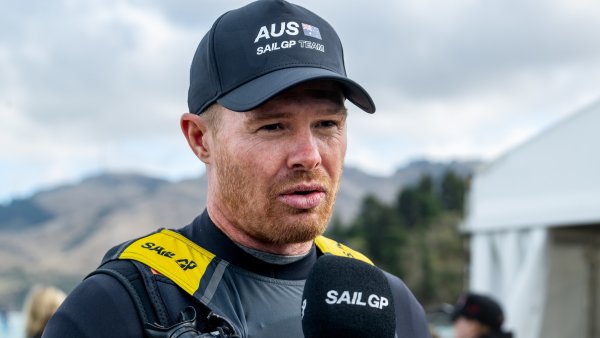
- Entertainment
5 Fastest Boats in Roblox Blox Fruits
1. Sentinel

- Price: 1000 beli (Requires Fast Boats Game Pass)
- Health: 1000

- Price: Free (Requires Fast Boats Game Pass)
- Health: 1200
The Miracle boat in Blox Fruits also flies! So, soar above the waves when you’re out at sea and skim over the rocks around. This unique ability and its small size make dodging cannonballs in Ship Raids much easier. If you are spending on the Fast Boasts Game Pass, Miracle will be the best option.

- Price: 5,000 beli (Only during Christmas Event)
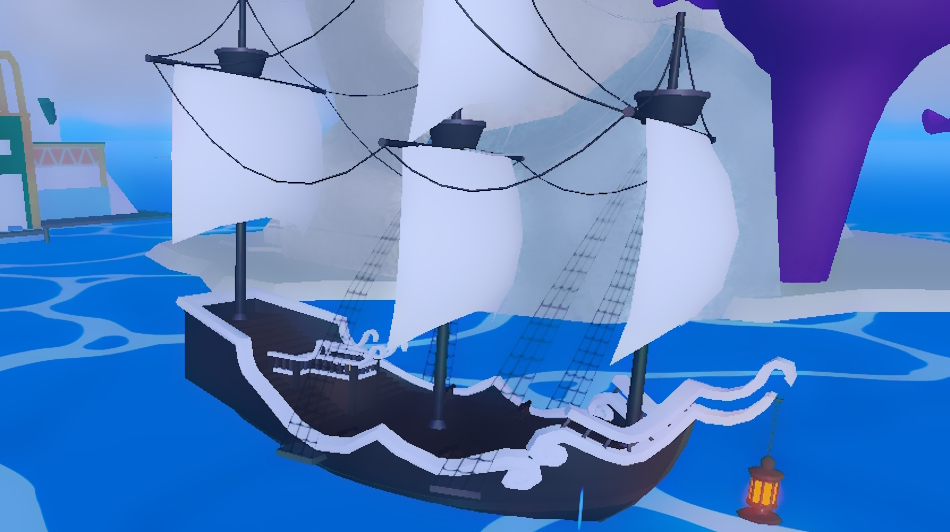
- Price: 5000 beli
- Health: 2500
5. Guardian

We end our list of the fastest boats a little differently. Guardian, formerly the Swan Ship, is a good ship in terms of overall performance. But in the list of fastest ships, it falls really short. It is considered one of the slowest boats in the entire game.
Ishan Adhikary
A gaming nerd who cover all thing video games. Spending time looking through the games and gaming industry was always a dream. Thanks to Beebom, I live it. Once I am done gaming, I write. Once I am done writing, I game.
Add new comment


Fastest animals in the world: Here are the quickest creatures by land, air and sea.
I f you’re an avid nature documentary watcher, you might know that there are creatures out there whose speed will make your head spin. These talented runners can escape their predators and best their prey with lightning-fast speed.
Who would win in the ultimate race, though? It depends where the track is. By land, by sea and by air there are different champions of speed. Here’s your breakdown of the world's fastest animals.
What is the fastest land animal in the world?
Start the day smarter. Get all the news you need in your inbox each morning.
The cheetah is the fastest land animal. This big cat holds the record for the quickest creature on solid earth. It is lithe and muscular with intractable claws which help provide traction.
How fast is a cheetah?
A cheetah is capable of running as fast as 70 miles per hour . The big cat’s body is quite literally built for speed – with long legs, a long neck and a petite head. They move through space with incredible agility, but can only keep up their speed for a short distance.
So, what’s this about the pronghorn then?
The pronghorn , is the fastest animal on Earth when it comes to longer distances. The ultimate endurance athlete, this American antelope can run at 35 miles per hour for a number of miles, and will boost that speed to 55 miles per hour during a sprint.
Which is the fastest flying bird?
The peregrine falcon can make mid-air dives at speeds as fast as 200 miles an hour, making it the true winner of the fastest animal title if it is a mere numbers game.
What is the fastest sea animal?
The sailfish . This swimmer can move through water as swiftly as 68 miles an hour.
What are the top 10 fastest animals in the world?
According to Sahas Barve, a Peter Buck Fellow at the Smithsonian National Museum of Natural History, this question is not as straightforward as we would like.
From a physics point of view, you can't run as fast as you can fly, Barve explains, because of the resistance the ground provides. This is why many of the fastest creatures are airborne.
Yes, the peregrine falcon is technically the fastest, but its movement is a dive, based on shape and gravity, the speed can't really be classified as 'flying.'
Other fast birds include:
- White-throated needle tails
- Golden Eagles
- Albatrosses
- Common swifts
For the sake of ranking, it is best to separate, as we have above, the fastest land, sea, and air animals.
What is the slowest creature on earth?
The slowest mammal in the world is the three-toed sloth . Their digestive process works so slow that they evolved to do less in order to expend less energy.
Needless to say, they should sit the race out entirely.
Just curious for more? We've got you covered
USA TODAY is exploring the questions you and others ask every day. From " What is the smallest animal in the world? " to " What is the most dangerous animal in the world? " to " Do sharks have bones? ", we're striving to find answers to the most common questions you ask every day. Head to our Just Curious section to see what else we can answer for you.
This article originally appeared on USA TODAY: Fastest animals in the world: Here are the quickest creatures by land, air and sea.


IMAGES
VIDEO
COMMENTS
The V.O 60, X-Yachts X4.0, and Beneteau Oceanis 30.1 are great examples of fast monohull boats. For multihull boats, Rapido 60 (Trimaran), Dragonfly 40 (Trimaran), and ICE Cat 61 (Catamaran) are some of the fastest in that category. The list can go on when you are talking about specialized performance boats, foiling boats, and even windsurfers.
Syroco vs SP80: groundbreaking ship design. 1 of 7. CNN —. For more than eight years, the world sailing speed record has remained unbroken. In November 2012, Australian Paul Larsen reached 65.45 ...
The current world sailing speed record has stood for a little over a decade at 65.37 knots (75.23 mph/121.06 km/h), set by Paul Larsen in the Vestas Sailrocket II back in 2012. There's a reason ...
But Vestas SailRocket also made its mark. The same day as the backflip, SailRocket became the world's fastest boat, as opposed to board, at a speed of 47.3 knots. The following season Larsen and ...
The first officially recognized 24-hour speed run was by the clipper ship Lightning in 1854, when it sailed 436 miles in a day at an average speed of 18.2 knots. Later that year, the American clipper Champion of the Seas logged a day averaging 19.5 knots, a feat that remained the fastest day on record for 130 years.
The performance on the 24th smashed it beyond all expectations though, a gloriously windy day that saw Sailrocket 2 deliver a 65.45 knot average officially becoming the world's fastest sailboat.
Photo: Mark Lloyd / Lloyd Images. Skorpios has been built with the express brief to break offshore records as the world's fastest yacht. Her recent win in the 2021 Fastnet Race - only weeks ...
Speed sailing records are sanctioned, since 1972, by the World Sailing Speed Record Council (WSSRC). Records are measured either by average speed over a specified distance or by total distance traveled during a specified time interval. ... "Sovereign of the Seas", 1852, 258 ft, the fastest and longest ship yet built when she was launched in New ...
The IMOCA 60 Malizia-Seaexplorer is the world's fastest monohull, having set a blistering 24-hour record of 641.08 nautical miles while competing in The Ocean Race transatlantic leg. Followers ...
The Rocket of Lake Geneva. The world-record sailing speed is currently 121kph. A group of engineers based in Switzerland want to set a new record of 150kph! And their invention could revolutionise ...
Exclusive: full tour of the ClubSwan 125 'Skorpios'. Toby Hodges sails aboard on the eve of the Fastnet Race, for which it will be the largest entrant ever. ...
Once such boat is the Mari-Cha IV, a carbon fiber mono-hull that holds the world record for the fastest single-hull sailboat to cross the Atlantic. According to the WSSR and ISAF, the 140-foot monster yacht crossed the Atlantic in 6 days, 17 hours, 52 minutes and 39 seconds at an average speed of 18.05 knots.
Hannah Getahun. Oct 3, 2023, 3:50 PM PDT. The SP80 boat. Courtesy of SP80. Company SP80 is trying to break the world record for the fastest sailboat. The fastest sailboat speed is currently 65.45 ...
The 85 mph-plus Bolide 80 is the world's first Hyper Muscle Yacht. But the futuristic interior is just as outrageous. Published on January 19, 2024. By Michael Verdon. Ocean Independence. In the ...
In pictures: The eight fastest sailboats in the world. In November 2012, off the coast of Walvis Bay in Namibia, the Vestas Sailrocket 2 was clocked at an astonishing 59.23 knots (68.1mph ...
Published: Apr 18, 2006. Media Platforms Design Team. The fastest monohull sailboat in the world is a needle-nosed ocean racer called V.O.60. It was designed by Bruce Farr, and is capable of 36 ...
At one point in 2013, France's Francis Joyon—a man renowned for his modesty and almost superhuman endurance—held the records for the fastest solo circumnavigation (57 days, 13 hours), the fastest solo 24-hour run (666.2 miles) and the fastest solo transatlantic (5 days, 2 hours). Since then the 24-hour record has fallen, but that in no ...
The current title of world's fastest boat belongs to Spirit of Australia, which recorded a two-way average top speed of 317.6mph (551.1 km/h) on Blowering Dam, NSW in 1978. Piloted by the late great Ken Warby, this homebuilt wooden speed machine was the first boat to break the 300mph and 500km/h barriers. Warby, who passed away in early 2023 ...
At 40 meters (approximately 131 feet) long, the Banque Populaire V (Spindrift 2) is considered the biggest racing trimaran sailboat in the world. It holds a lot of records. For example, it's the fastest boat to cross the North Atlantic (New York City-Lizard Point) with an average speed of 33.41 knots (38.45 mph).
Some of the fastest cruising sailboats include the Beneteau Oceanis 30.1, which can travel at 20 knots; the Grand Soleil 34, which touches 20 knots; and the Italia 9.98, which can reach up to 40 knots. Of course, there are many other high-speed cruising sailboats that you can choose from. If you love to cruise but still want to reach your ...
Fastest sailboat in the world: 121 km/h. As of 2012 it is world speed record sailing remained unbroken. Because in November 2012, the Australian Paul Larsen reached 65,45 knots, a speed of 121 kilometers per hour. This is what he achieved with his Vestas Sail Rocket 2 when he blasted over the South Atlantic waters off the coast of Namibia.
A record on the high seas: Cole Brauer becomes first US woman to sail solo around the world. On Thursday, Cole Brauer made history, becoming the first American woman to sail solo nonstop around ...
Sailing the fastest offshore monohull, the ClubSwan 125. Yachting World's Toby Hodges sails the radical new ClubSwan 125 Skorpios and gives you a tour. Skorpios is the largest entrant in the ...
Outerlimits Power Boats has a large selection of high-speed power boats. The SV-50, SV-52, SL-44, SL-52, and even catamarans like the 43CAT and 48CAT are among their fastest boats. One of their quickest speedboats is the SV-52. It was made to work well at high speeds and is known for its smooth ride and soft landings, even in rough and choppy ...
Alongside the World's 50 Most Innovative Companies, Fast Company recognizes 606 organizations across 58 sectors and regions. SailGP features high-tech, high-speed 50-foot foiling catamarans that are raced by the world's best athletes in 10 national teams and broadcast in over 200+ markets (CBS and YouTube in the U.S.).
Top speed: 45 mph. Standing up to 30 inches high at the shoulder, Greyhounds are the fastest dog breed in the world, and among the fastest sprinters on the planet. Like cheetahs, they run in a ...
1. Sentinel. Image Courtesy: Gamer Robot Inc. Price: 1000 beli (Requires Fast Boats Game Pass) Health: 1000. Sentinels, formerly known as the Enforcer, is the fastest ship in Roblox Blox Fruits. It costs 1000 beli but requires a Fast Boats Game Pass. You can also spend 350 Robux to obtain this beast of a boat.
Fastest from the blocks: 0-60 mph. Thirty years ago, any car that could clock 60 mph in five seconds or less was considered extremely quick. Today, high-performance, gasoline-powered sedans and ...
The former US Marine is officially the world's fastest gun disarmer, with a record of 0.8 seconds, according to Unilad. There's a tragic reason Victor Marx is the fastest gun disarmer in the ...
So, what's this about the pronghorn then? The pronghorn, is the fastest animal on Earth when it comes to longer distances. The ultimate endurance athlete, this American antelope can run at 35 ...